Argentina
Buenos Aires (16/5/07 – 19/5/07)
I arrived in Buenos Aires by boat from Montevideo… I immediately took the subway to the centre of town and started knocking on doors of hostels… apparently April is a busy month (I was seriously told this…). I did finally find a hostel on the corner of Ave de Mayo and Ave 9 de Julio… possibly the two busiest streets in all of Buenos Aires. So when Buenos Aires wakes up… so do I. It is a lovely quaint old building… the key looks like this.
Right in the middle of the Ave 9 de Julio, which is, incidentally, the world’s widest road, there is an obelisk. Is it a conincidence that one of the banners in the background is for lubricant? I think not.
What to do in Argentina… tango of course! I went to a (surprisingly un-touristy) tango show which included dinner and a free tango lesson. The girl-boy ratio… as generally happens in all things dance-related, was favourable… well… for a guy.
This also meant that I got to sit with these lovely ladies for dinner. They are from England (to match my top), Switzerland, England and Australia…
It all started innocently enough… a bit of live music…
Ok… a couple of guys and girls come out in funky costumes… cool.
Oh, now for some dancing. How exciting. I was sitting right up the front, right next to the stage… I felt like I was going to get kicked once or twice… I didn’t, but one of the dancing girls did towards the end of the show… ouch.
The lighting says it all… sexy, seductive, slick…
There was even a bit of singing…
…and a brief interlude for some audience participation. (yes, I got up to dance… as I did at the samba show in Brazil…)
Then things suddenly got really hot…
They’re not bashful about touching each other in tango… hmm… I really must try to get better at this dance.
The street I was staying on – the Ave de Mayo, ends at the Plaza de Mayo – the political centre of Argentina. There are many important government buildings here… and these folks… to guard them.
Is that an obelisk in the middle of your street… or are you just REALLY happy to see me?
Buenos Aires feels more European than South American, with its obelisk, many fountains and ecclectic architecture…
The Plaza de Mayo… dominated by a statue of San Martin, one of the engineers of South American independence. He originally fought and worked alongside Simon Bolivar until internal disputes in Argentina cut supplies to San Martin… leaving him high and dry. Not wanting to get in the way, and having little to offer the cause without supplies… he stepped aside and eventually went to France (why not?). Of course… Bolivar got all the credit and San Martin simply remains an Argentine national hero.
There is a cemetary, the Cemetary of the Recoleta… apparently one of the four most important cemetaries in the world… anyway, its most famous resident is the enigmatic Eva Peron who was named after the character in the musical “Evita”.
The Argentinians are a funny bunch… these two nobles were husband and wife. The wife liked to shop… alot. One day the husband decided he’d had enough, so he placed an ad in the paper notifying everyone that he would no longer take any responsibility for his wife’s expenses. This, unsurprisingly, angered his wife and they had a big argument later that day. After that day, they never spoke again… although they continued to live in the same house. When they were buried… they requested that their busts face away from each other. Their coffins are also on opposite sides of the mausoleum.
Oh… the story of Rufina gave me the shivers. She was a pretty young thing on her 19th birthday when… just as the party was starting, she learned that her fiancee was having an affiar… with her mother. Shocked at this news, she collapsed… no pulse, no breathing… she’s dead Jim. The birthday party turned into a wake and later that night, her coffin was placed outside the family tomb (visible just to the right of the corner) to be placed inside the next day. Stories about what happened next vary slightly… some say that the coffin was pried open and there were scratch marks on the inside, others say that she even managed to get out and walk around a bit. Whatever happened, the shock of finding herself in the cemetary was probably more than she could take (she’d had a rough day) so she collapsed… dead… properly this time. So… now she gets her own special little spot next to her family’s. But wait… there’s more. The boy who was having an affair with Rufina’s mum continued to do so and even had a child with her! But wait… there’s more! This guy was a bit of a player, siring many children but never marrying… he would later become the president of Argentina!
Many of the grave sites are built to different architectural (sp?) styles… sometimes, the style even varies within the same site.
Nearby… there is a very large tree. Planted by Monks in the 1720s. It is not technically a tree… it is a very large shrub. (you think I’m joking don’t you?)
Buenos Aires is a South American city with an identity crisis… luckily it has these in case superman is ever needed.
This was a new one on me… this guy was grinding a pair of scissors when I walked by… but apparently he can do anything, repair shoes, cut keys… all in his little “office”
In one very upmarket suburb towards the north of the city, a dog-walking service is put through its paces.
An embassy? The house of an ambassador? A government bulding? No. This is the Four Season’s Hotel… well, part of it.
One could easily be forgiven for mistaking Buenos Aires for a European city… this building, clearly in the French style… turns out, it is actually the French Embassy.
This rather impressive building is the Law University. Built on a site which used to house water pumps…
Once a family residence… this is the Museo Nacional de Arte Decorativo. The house was originally built because a wealth businessman, on returning to his birthplace of Buenos Aires, was dissapointed that there were no houses with rooms large enough to hang his tapestries… so… he built one.
A vase… an expensive one, from what I’ve heard.
The oldest item in the house, a statue from Roman times, excavated from the Appian way.
And finally… the lady of the house. (she’s the one in the painting on the wall… you people… minds out of the gutter!)
This statue was a gift from France to celebrate the centenary of Argentinian independence (the French seem to have a thing for that). There are four statues around the base representing industry, agriculture, arts and education.
The statue of some general who was instrumental in Argentinian independence… I forget his name… but I do remember this: he wrote history books. So… the history of thier own country, as taught in high schools all through Argentina, was originally documented by him. Scary.
The very unusual building on the hill is the national library, which took 30 years to build. Not because it was difficult to actually build… but because the various bodies in charge of getting the job done bickered an awful lot and that delayed the process. In the foreground, is a memorial to Evita built on the site where the Peron’s house used to be. The dome is supposed to be in the exact place where her bed was (she died in bed from cancer after an agonizing 10 month fight with the disease)
A very large metal flower… it opens and closes at sunrise and sunset. The 6 million dollar sculpture was donated by the artist who designed it as a gift to his birthplace after he found great wealth and success in Europe.
mmm… a buffet
This time… I couldn’t find a rooftop restaurant from which to take my photo overlooking the obelisk and the Av 9 de Julio… instead, I found a top-floor swimming pool and spa… so I went in and got myself a massage, just so that I could bring you this photo (oh, the suffering).
people here are very friendly…
This tower was built by a lady with an interesting story. She was dating the son of one of the wealthiest people in all of South America at around the turn of the century (and SA was fairly wealthy back then). However, the boy’s mum didn’t like her… she was Irish and a protestant so she wouldn’t let the marriage go ahead. So she was pretty pissed off… she wasn’t exactly poor so she asked daddy if she could have some money to build some rental property so that she could support herself because she wouldn’t have a husband to do that for her. Her dad was like, “yeah, alright, here you go”… and she built this. A very modern building (completed around 1920) and the tallest in Buenos Aires by a mile (well, obviously not 1609m, but anyway). It had central heating and… get this… central air conditioning. How? Via big fans which blew air past massive blocks of ice!
This tower was a gift from the British for the centenary of Argentine independence. Interestingly, Argentina was nearly a British colony… Britain successfully “captured” (it was a very peaceful occupation) Buenos Aires in the early days and, since a third of the population were British anyway, everything carried on as normal and nobody seemed to mind. In fact, most of the infrastructure was laid by the Brits… Argentines drove on the left side of the road all the way up until the 1940s. Anyway, the British left for a while and came back to try and conquer the rest of Argentina… but this time, they were met with resistance and failed dismally.
…and right across the street from the Britains gift… the memorial to the 600 dead from the Falkland Islands/Islas Malvinas war… definitely not a coincidence.
an impressive statue of San Martin. The base was designed by a German fellow who won a competition (a base-designing competition, in fact). San Martin is supposed to be pointing towards the Andes… but the people who built this thing stuffed up a little… and, instead, he points in a different direction.
This *was* the Israeli embassy. About 16 years ago, a car bomb (well, a small truck actually) did this and what you see here is actually a fairly close approximation to what was left after the bombing. So far, nobody has been brought to trial…
Some buildings can’t afford fancy facades… but they can afford to paint windows and roofs to look fancy.
Many parts of Buenos Aires are such that… if I were to wake up here, I would totally think that I was in Europe (probably Spain… because of the Spanish everywhere)
Argentine congress… at the other end of the Ave de Mayo
Ushuaia (20/5/07 – 23/5/07)
Tierra del Fuego – Land of Fire. The indigenous people of this land (yes, people actually used to live here for reasons other than tourism!) used to keep fires lit 24 hours a day so that they wouldn’t freeze to death. Early explorers who didn’t get close enough to see the people thought that the fires occurred naturally and so named the Island. (Those explorers who did get close enough to see the people got dashed on the rocks… which is why there is a lighthouse… more on that later). Ushuaia is also a special tax-free zone… and it would have to be, the cost of transporting stuff down here would have made settlment here difficult before the airport was built. Most of the roads here still aren’t paved, but the town is now expanding rapidly due to the influx of tourists and because if its importance as a stopover on the way to Antarctica (it is so close to Antarctica, that I wonder why Christchurch is such an important set off point… it is more than twice as far away)
The view of the sunrise from my window on my first day…
A few minutes later…
The beagle channell, named for the ship which first sailed successfully through it. I thought it would be a good starting point… I’m not entirely sure what the bouys were for… Ushuaia and its spectacular backdrop of snow-capped peaks can be seen in the background.
A lighthouse… not the most southern lighthouse is the world… but almost. FYI – red-white-red means “trouble to the west”, white-red-white means “trouble to the east”, “red-white” (red on top) means trouble to the north and “white-red” means trouble to the south.
These are cormorants… birds who are a little confused as to whether they are sea gulls, albatrosses (albatrossi?) or penguins…
Unfortunately it is not the right time of the year to see whales breaching… but these sea lions were determined to give us a good show.
They eventuall led us to their colony… where there were very cute little baby sea lions.
oohhh… a colony. I wonder when this colony will achieve independence
This is our boat… it is not very big… past the lighthouse, the waves start to get very big… much bigger than the boat…I don’t feel too well…
We stopped off at one of the islands to have a bit of a walk around. Most of the vegetation here is very similar to the vegetation that one finds in high mountain passes (like Salkantay for example)… so why do we see this stuff at sea-level? Well… the weather conditions here are such that only things that are designed to live in high mountain passes is able to survive here.
our captain thought it would be a good idea for us to have some of their traditional “coffee liqueur”…. mmm… perfect for a seasick Daniel…
Ushuaia is a friendly town… the ship closest to us is Argentine, the one right behind it is Chilean. Maybe it is lost.
Who needs a map anyway?
mmmm…. meat in Argentina has been of a consistently high quality… I think I ate a whole pig that night (it WAS an all-you-can-eat meal)
Oh, beaver watching… sounds like my kind of trip. Notice the snorkel that lest the engine breathe… this will be important later
The Andes are often described as the “spine” of South America… well… in that case, Tierra del Fuego is the Coccyx. The Andes run north-south for almost their entire length. Down here, they do a little turn and run east-west. This is possibly one of the easiest places to cross the Andes… as we’re doing now.
That looked like a nice lake didn’t it? Well… it was so nice, we thought we should go out on canoes and have a bit of a paddle in the puddle. Well… lake Escondido is a bit bigger than your average puddle.
…and lucky me, I even got to see a beaver!
The service here is exceptional… our driver is seen here cleaning the back window.
One of the smoother parts of the trail… most of the trail was about as smooth as subtleness of a chainsaw. In the back compartment, without a seatbelt, I played pinball with myself and two other passengers.
We got to know each other quite well, thanks to that and a few ice-breakers (ha… ha… ha… !)
This is where we are… actually… maybe we’re here…
Sometimes… I think I’m stuck in postcard-land. This is Lago Fagnano, a very large (and VERY cold) glacial lake, the largest in Tierra del Fuego.
This is no optical illusion, nor is it photoshop trickery… we are actually driving IN the lake… remember what I said about that snorkel…
Yeah, those are pretty impressive waves for a lake… and pretty impressively pretty weather for this time of year
Its a warm day in Ushuaia…
the further south you go, the more primitive tickets seem to be… the bar girl wrote this one out for me with a pencil.
The roads are windy and slippery… the snow-covered fields however, are… well… they’re very picturesque, even if they don’t really lead you to anywhere you’d want to go. Today, we travel by dog!
Somehow, I managed to be the tallest person in the group… so I got to sit in the back… nice a cosy. It is difficult to see from here, but the sled is held together by little bits of string.
Those dogs are pretty quick… and smart too, you just yell orders at them and they somehow know what to do. (and they won’t drive off cliffs or into walls either, funny that)
…go to the end of the world. There will be a train there, take that train to the end of the line…
Ushuaia, like Osstraya… was a convict colony. The train was built by convicts to help bring supplies from the prison to the very small town that existed here at the time. A steam locomotive still runs the route… for the benefit of tourists.
The train snakes its way into the Tierra del Fuego National Park. During the summer, there is a park entrance fee. During the winter, it is waived… although most of the park is inaccessible in the winter.
This area is called the “tree graveyard”. All these trees were felled roughly 80 years ago by the convicts in order to construct the village and for firewood. This would be a good ad for deforestation if the view wasn’t so spectacular…
The end of the line… at the end of the world…
The museum at the end of the world… I like the way they use strikeout in their sign… its very 1337… (don’t worry if you don’t understand)
oh, a grocery store… how quaint
If I had known that these were here, I wouldn’t have put myself through that gut-wrenching sea-voyage through the Beagle Channel
Looks like humans aren’t the only species who can become dependent on the bottle…
The entrance to the maritime museum… this ship has seen better days.
The security is just there for show…
The museum was filled with beautiful models of the many famous ship that sailed through (and occasionally crashed in) these parts. The photos don’t really do the models justice, and they actually turned out a bit boring anyway, so I won’t bore you to death with all of them.
This one is significant because it was Roald Amudsen’s ship… he was the dude who was the first to make it to the South Pole.
The museum itself is housed in an old naval base.
Parts of it looked a bit like a prison to be honest, but it gave the exhibits a very ‘personal’ kind of space.
In the streets of Ushuaia that day, there was some kind of protest march. Now, I know all the guidebooks say to stay away from large gatherings of people but c’mon… these guys had DRUMS!
The sun sets over the city.. and all is calm, even the water. The whole town is really quite picturesque.
The moon, the stars, the spire of a church and… some corrugated iron warehouses, how very romantic.
Well, I’m on the Tierra del Fuego… why not order a dessert – del fuego?
I took the bus north to Calafate… those who have been paying attention (I wasn’t) will know that Tierra del Fuego is an Island. Apart from having to get my passport stamped four times (out/in Argentina, in/out Chile) we also had to cross the Straights of Magellan…
About a hundred years ago, this crossing was pretty deadly… the boat we were in was pretty big… but… these waves still rocked the boat in a manner that made me queasy…
Calafate (24/5/07 – 26/5/07)
El Calafate was originally an important stop for the southern pass through the Andes. It is conveniently located about a day’s walk from the Chilean side and in a natural meteorological depression, useful in this very windy area. The name Calafate comes from a plant, which was one of the only things that grew here at the time and which early travellers used to set up their tents close to to shield them from the harsh winds. The recent paving of the inbound road that connects to the famous Ruta 40, and the construction of the airport has seen the population explode in the last six years. Hotels are going up constantly, although they still struggle to cope with demand during peak season. Now it is quieter… and the existence of the infrastructure was very useful… “hello, I was wondering if I could go on this tour tomorrow?” being a common line uttered by myself.
I arrived early in the morning, and after waking up the receptionist at a hostel somewhere in town, I went to sleep for about three hours and woke up to this beautiful sunrise over Lago Argentina, the largest lake in the Argentine Lakes district. It varies in temperature between 2-6 degrees celsius for the whole year and it is a freshwater lake
I hopped on a tour to see the famous glacier Perito Moreno. The drive, although only about 80kms, takes about two hours because most of the road is nowhere near as nice as this.
A goucho – cowboy, out for an early morning ride.
Eagles pounce on roadkill. The one in front is less than two years old (you can tell by the colour of its feathers).
Apologies for all the landscape shots… I just bought a circular polarizing filter for my camera and, in my experimenting, many of the landscape shots have come out swimmingly… and so I felt I had to include them.
The famous Ruta 40 which zigzags down Patagonia through the arid steppe-land, connecting all the touristy towns…
We can now see it in the distance… no, that isn’t a funky effect of the polarizer, one of the first things that one notices is just how blue the glacier really is. There are two main reasons for the strange colour. First of all, the glacier is formed by snow in the mountains, so there is alot of air trapped inside which slowly gets compressed. As it slowly gets released, some kind of chemical reaction occurs which makes the glacier look bluer than it should… or so I’m told. The other reason is that, as it slowly moves over the rocks and such, it grinds them down and occasionally absorbs minerals from the pulverized rock-dust. This is where, I guess, the minerals in mineral water come from…?
I don’t know why I opted to do this… I really don’t like boats. But I also wanted to get really close to the glacier..
How close? Well… not close enough to touch it… but close enough to… smell it.
I think I’m getting better at this whole panoramic shot business. This is a panoramic shot of the glacier from just above lake-level. Click on the photo (warning: the panoramic shot is quite big, I hope you have broadband!)
Afterwards, we headed up to the walkways… specially constructed so that we wouldn’t disturb the wildlife in any way.
The views from the walkways were spectacular… and not just in the direction of the glacier.
Now… where did I leave that glacier? I put it down here somewhere just a minute ago…
Yet another panoramic shot (I can’t seem to get enough can I?). This one isn’t as big, I promise. But it is still of a non-trvial size. Click the photo! (I used to think I was sooo rude, walking past postcard stands, looking at postcards of this thing and thinking to myself “ha! I can take a better photo than that”. Well… I guess it turns out that I can. Maybe I should get into the postcard business)
I’m not sure why, but I always thought that the tops of glaciers were flat… well… they’re not.
It takes about 10 minutes to walk the length of all the walkways. 20 if you’re an overweight american tourist. Anyway… we were given two hours of “free time”. Why? So that we would have the opportunity to see a few bits of glacier breaking off. I waited, concentrating, in the blistering cold (though not as cold as Ushuaia) for just over an hour… then I finally saw it. 3 frames-per-second, 10 megapixels, 67mm diameter circular polarizing filter, 17-85mm zoom with image stabilizer and ultrasonic auto-focus motor… I really put my camera through its paces, and it did good, really good.
I thought myself extremely unlucky for only seeing one significant bit of ice breaking off the glacier. However, I later found out that the piece that I saw was unusally large, and that bits that big break off about two to three times a week… guess I was pretty lucky then. I took this sequence of photos… click on the picture above to see them. This is a big file, it might take a while to load… be patient. (c’mon, I waited over an hour to get these shots, you can wait for a few minutes to see them). There are 21 frames in this set! The last one was taken about 20 minutes after the initial break. The other 20 frames span about seven seconds. Just for an indication of scale – the bit of ice that broke off was about twice as big as my apartment block in Melbourne (20 floors). The sound that those things make when they crash is both frightening and very impressive at the same time.
“…beneath our radiant southern cross, we’ve boundless plains to share…” (just above the trees and slightly to the left)
The southern cross is not only very pretty, but also very useful. The five stars of the cross are each good examples of magnitude 1, 2, 3, 4 and 5 stars (1 being the brightest, 5 the dimmest).
If you’re girlfriend starts smoking… slow down and use lubricant… but what if your mountain starts to smoke?
I went back to the glacier to take a closer look… lucky I did because I wouldn’t have noticed this sign otherwise.
Returning the next day also meant slightly better light… so, another panoramic shot to test your internet bandwidth. click the picture!
I just don’t learn… I mean… “lakes district” = lots of lakes, duh. Lots of lakes = boats. Boats = i don’t feel too well
Now that’s what I’m talking about… a CLOSER look… hmm… I wonder if we can get EVEN closer?
One of the park rangers, with his giant pen,is explaining to us the finer details of the way that climate infulences the movement of glaciers. I’m sure I’ll get a more detailed recap of this in my course… (MA in Climate and Society, starting this Sept.)
hmm… this is pretty close. This ice looks a bit slippery though
The tools of the trade… ice axes and crampons. (does anyone know where the name “crampons” comes from?)
Lets see if we can find me a sharp ice axe…
despite wearing totally inappropriate footwear, they hooked me up with a really old pair of crampons, which are basically old-school roller skates but without the wheels. They weigh about the same too…
My guide starts explaining to us the ins and outs of ice trekking and how to use our crampons and ice axes effectively
He also explains to us how to get yourself out of a hole…
The guides went ahead… and occasionally cut some steps out of the ice for us. I think they were just looking for something to do with the ice axes… we didn’t really need them on this terrain.
ok Daniel, try not to fall in this… otherwise you will actually need to use your ice axe…
The terrain on the top of the glacier is much smoother than it looks from a distance… and you can’t feel it move. Even though it moves as much as 10m a day in winter.
The view over the glacier into Lago Argentino was quite spectacular… almost as spectacular as the view over Lago Argentino onto the glacier…
yet another panoramic shot… I should try printing this one, I stitched together six portrait-orientation shots for this, rather than my usual stitching of 4-5 landscape-orientation shots. The original (which isn’t on the website, its too big) is a huge 6763×2751 pixels. click the picture!
At the end of our little trek, we had some whiskey… there was no shortage of ice
Just chillin’ with my glass and my axe… which didn’t get any real use… oh well, that’s probably a good thing.
The next day, I went to have a look at some other glaciers… unfortunately, these were only accessible by boat. Such has been my luck of late. At least this boat looks pretty big… lets hope the waves aren’t too big.
As you can see, not all glaciers flow into the sea. These are called “hanging” glaciers because of the way that bits of ice break off and leave the end of the glacier “hanging”, so to speak.
This glacier, the Spagazzini (I think) was named after an Italian guy who was one of the first people to come up with the theory of how glaciers are formed and how they move. I learned today that the Perito Moreno glacier is a bit of a curiosity among glaciers because it is one of the small handful of glaciers in the world which is actually advancing. You see, because of global warming, almost all the glaciers in the world have been retreating – that is to say that they are losing ice faster than they are able to replenish it. Many things affect the rate at which glaciers advance or retreat, the length and temperature of summers, the length and temperature of winters, the amount of precipitation that the regions which supply the glaciers receive, etc. This makes glaciers very good indicators of long-term trends in climate… which is why many people are alarmed that almost all the glaciers in the world are retreating, and at a very fast rate.
In the background, you can see one of the “tributaries” flowing into the glacier. The andean ice field which supplies all the glaciers in the Los Glaciers national park is the third largest in the world, after Antarctica (a clear winner there) and Greenland (which is not so green…). Over those hills is Chile and the pacific ocean… the ocean is actually closer to where the boat is right now than Calafate
Ooohhh.. icebergs. Now we wouldn’t want to get too close. Mind you, we haven’t jinxed this ship by claiming that it is unsinkable so we’re probably pretty right.
Here is a good example of two icebergs at the opposite ends of the iceberg-spectrum. On the left, we have a nice fluffly white/blue iceberg which most likely broke off from a part of the glacier near the top and, on the right, we have a gritty, dirty iceberg which came from the bit of the glacier which rubs against the bottom of the glacial valley, picking up dirt along the way. It is difficult to see here, but the dark glaciers melt more quickly than the lighter coloured ones because the darker colours absorb heat more readily. On some icebergs, where there are dark bits and light bits (no dirty jokes, please) the dark bits, absorbing more heat, melt more quickly, making those icebergs look a bit like giant white blocks of cheese with holes in them.
Our captain doesn’t seem too concerned about our proximity to the glaciers…
The Upsala glacier. Named after a Swedish town whose university led one of the first extensive studies of this glacier. The Upsala is one of the largest glaciers in the region and actually splits and has two fronts. This is the western front… and its pretty quiet. According to recent research (looking through old photos), this glacier’s front was where the boat is right now… as recently as 20 years ago (which, in glacier-time is about equivalent in human terms to the blink of an eye). If that isn’t cause for alarm about climate change… then I don’t know what is.
Luckily we weren’t the only tour boat out on the water that day, the other boat conveniently sailed very close to the front of the glacier, giving me a good opportunity to take this shot, which gives you some idea of just how big this thing really is. The surface area of the Upsala glacier is about five times that of the Buenos Aires metropolitan area… which is pretty darn big.
About two thirds into the day, we disembarked… much to my relief (I don’t like boats… although this one wasn’t too bad and it was a fairly calm day). Our plan was to have a little picnic at the side of a small lake.
Of course, “small” is a relative term… it was much smaller than the Lago Argentino… but it was still of a non-trivial size. It had also just frozen over… like… in the last day or so. Ordinarily, three glaciers flow into this lake… but due to the glacieal retreat that I was talking about earlier, only one of those three actually gets to the lake. The other two are “hanging” glaciers.
Two of the glaciers can be seen here. The one on the left flows out of the same valley as the Spigazzini glacier and can almost be considered another “front” of that glacier. Anyway, it is huge… not quite as big as the Upsala… but this shot is catching it at quite a sharp angle so it doesn’t look as big as it is.
Forest gives way to rocks… which gives way to lake… frozen lake… which is filled with icebergs. I can’t begin to describe to you how cool all the icebergs looked being totally motionless in the frozen lake. Then I realized that, since all my photos are still anyway, those who read this website who haven’t seen lots of icebergs before (most of you, I think) probably won’t appreciate just how weird it was to see a lake full of totally motionless icebergs.
I maintain that Autumn is one of the coolest times of the year for photographs. The leaves were still falling which meant that they were layered in the frozen puddles near the lake… and there were even freshly fallen leaves on top of the ice… priceless.
Not to be outdone by the leaves, the ice has a bit of a photogenic moment.
…because everything was *just* starting to freeze over, most of the puddles and small streams surrounding the lake only had very thin layers of ice on them where one could observe the patterns of crystalization (is that even a word?)
Leaf falls on paper-thin, newly formed ice. A few minutes later, the leaf, warmed by the sun, caused the ice immediately under it to melt so it started to sink… by tomorrow, it will be, like the many leaves around it, halfway in the frozen puddle…
Look! rocks and snow and ice reflected in… rocks and snow and ice…
As we journeyed back to the port near Calafate, I was thankful that it had been such a calm day and that I managed to avoid being seasick once again. This mountain is a mere 2000 something metres above sea level (not much, this is the Andes) and it is nicknamed “devils horns”. Apparently, Argentina and Chile have a bit of a border dispute issue. It isn’t violent… but if you buy a map over here, then cross into Chile and buy a map there, the borders on each of the maps will be slightly different. I guess nobody could be arsed constructing a fence (especially since the border is the Andes mountain range).
On this relatively warm day… the flamingoes were out in force in the shallow part of the Lago Argentino… most of the lake is very deep, its deepest point is almost 800m deep I think… about 9000 years ago, all those glaciers extended all the way past the end of the Lago Argentino…
…starlight, star bright… first star I see tonight… I wish I may, I wish I might… learn more about astronomy so that I can tell the difference between a star and a planet (this is Venus, being brighter than Sirrius, Canopus (sp?) and Alpha Centauri, is often mistaken for a star)). An american guy on one of these tours once asked me whether this was the north star – polaris. WTF!!!??? I can understand mistaking Venus for a star, that is a very common mistake… but we’re in the southern hemisphere, well below the 45th parallel… I dunno… it seemed a silly thing.
Bariloche (27/5/07 – 30/5/07)
San Carlos de Bariloche… if Argentina is a South American country with an identity crisis, then Bariloche is a prime example of this. Situated between a picturesque lake and a handful of very high mountains, including Cerro Cathedral – the largest Ski Resort in South America and the fifth largest in the world, this town seems to think that it is somewhere in Switzerland.
Lago Nahuel Huapi… still in the lakes district I see…
Now I’ve heard of water features in shopping malls… but a lawn?
In keeping with its confusion over where it is… the town is very famous for its chocolates. There are many very good chocolate shops all over the main strip.
Racing through the winding country roads at dusk on my first night… so that I could take advantage of the good light for photography.
It venus again… at dusk… again. Will I ever get bored of these shots? Probably not…. sorry
A chair lift that reminded me of the Arthur’s seat chairlift on the Mornington Peninsula near Melbourne… although that chairlift doesn’t have a huge sign out the front saying “El Gringo”
The view from the top is pretty special… of course, it helps that the scenery, with its glacial lakes and Andes mountain range are rather spectacular even when viewed from lake-level (which is about 900m above sea-level)
Hey hey hey… and you thought you’d seen the last panoramic shot… why don’t you just click the photo?
The rare Andean white puma… sacred to the indigenous people of South America since time immemorial. Actually… I may be mistaken, this could just be a domestic cat.
The chair lift is not for those who are afraid of heights… or the wind.
Another pretty landscape, this time from a specially constructed (for tourists) lookout by the side of one of the mountain roads.
.And, as with all tourist traps, there were numerous stalls trying to sell numerous things… like these… I feel a coldplay song coming on…
A picture of a bush… and the shadow of some really annoying tourist who just refused to move to get out of my shot. He even had the audacity to mimic my movements to mock me… someday I’ll show him! Oh, the resort in the background is the Llao Llao, pronouces “show”, to rhyme with “cow”. It was built in the 30s and remains one of the most expensive hotels in all of Argentina… i think.
In this area… there is also a port… oh dear… I sense that I won’t be able to avoid boats for much longer (I am in the lakes district after all)
Argentina’s primary nuclear research facilities is located near Bariloche… I wonder who came up with that idea.
I also wondered if it was a coincidence that the military school happened to be right next to the nuclear research facility… very suspicious
Remember what I said about chocolates? Well… I decided to pay a visit to a local chocolate factory.
mmmMMMMMmmmm….
I wasn’t able to stay in Buenos Aires for long enough to catch a game between the two famous rivals Boca Juniors and River Plate… this was as close as I got to seeing them play each other.
I still maintain that Autumn is the best time of year for nature photography.
Sea Kayaks, if I’m not mistaken…
Well, it isn’t exactly the sea, it is Lago Gutierrez, one of the smaller lakes in the area… but it was still pretty big, it still had waves and was still freezing cold. The dog in the foreground belonged to one of the guides… and he ran alongside us on the shore while we kayaked around the lake.
Don’t let the sun fool you… it was really really cold. The large lakes were just about the only bodies of water that weren’t frozen.
I spent some time working on my technique… which still kinda stinks. Lucky I had my guide behind me to keep the boat going straight.
We stopped at one of the many beaches on the way and I indulged in a very traditional Argentine drink – mate. Tastes a bit like green tea…
…and, like many European cities… Bariloche also has an obsession with obelisks
Not entirely satsified with the windy cold cable cars of Cerro Camanario, I decided to try out Cerro Otto… a much higher mountain with much bigger chairs…
At the top… there is a revolving restaurant, the only one in Arentina. Not sure why it bothers to revolve… the view over Bariloche and the lakes in nice… but the view the other way, while still reasonable spectacular, is relatively boring in comparison.
Not sure what’s going on down there… maybe someone’s shooting a music video “come on baby light my fire”… but probably not.
Parque Nacional Lanin (31/5/07)
Ever wanting to get off the beaten track… I thought climbing a mountain would be a good idea. Why? Well, because its there, of course.
Hmm… looks like Mordor that way… lets go another way.
Adjusting crampons… not especially difficult, unless your fingers are frozen of course.
Our little expedition began innocently enough… just a walk through some forest.
It wasn’t long before we began really needing this stuff. You can only go for so long before you just get sick of cutting steps into the ice… so you just put your crampons on and an air hockey table suddenly turns into flypaper
Always wear protection… I should’ve spent more time polishing that helmet…
Now here’s a view you don’t get out the side of a double-decker tour bus.
For fleeting moments throughout the first day, the weather cleared for just long enough for a good postcard shot
It felt pretty good being this close to the bottom of the clouds…
The mountain side refuge, built by the military to keep tabs on Chilean border movements… as in… to stop the border from moving. (The summit of the mountain is *just* on the Argentine side, I asked my guide whether I needed my passport))
The inside of the refuge… simple and effective…
The start of a very romantic candle-lit dinner on the side of a snow-capped volcano…
On the second day, the weather turned ugly… fugly even. Stepping out the door of the refuge, you couldn’t see more than a few metres in front… which made things difficult. This shot was taken just as we came off the mountain. Visibility is much better now, at a few hundred meters. It was still very windy and unbelievably cold. The snot that had accumulated in the front of my balaclava was freezing over, making it difficult for me to breathe.
Trouble with those condors… is that they fly so darn high that its difficult to get a clear shot of one. This one is actually a baby, as evidenced by the brown feathers (adults are grey/black).
On the way back, we drove along the “seven lakes drive” which is very beautiful. We drove along the same route on our way here, but since it was 4:30-7:30am, we couldn’t really see much. After being snowed off the side of Lanin, I now understand where all the water for all the lakes in the lake district comes from (and why that water is always so darn cold).

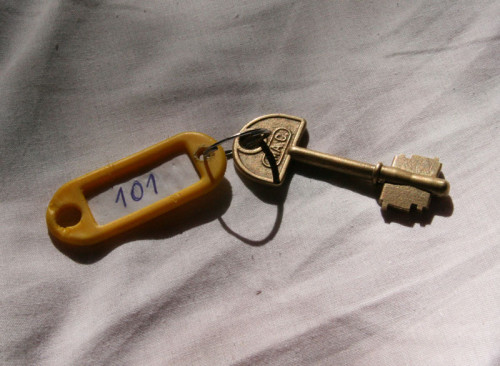
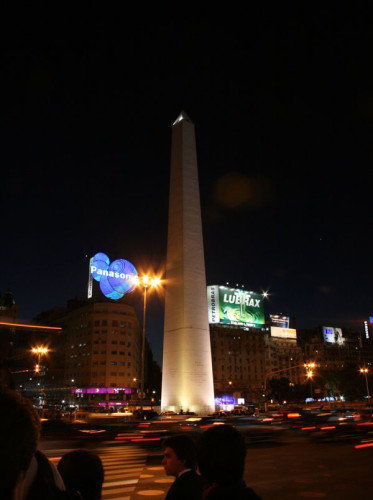
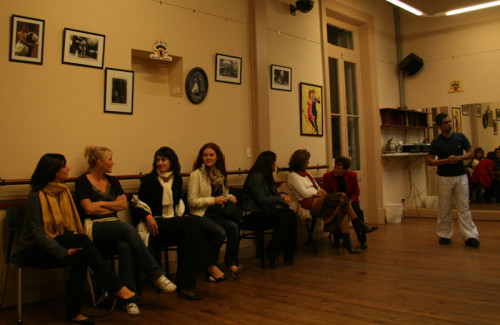
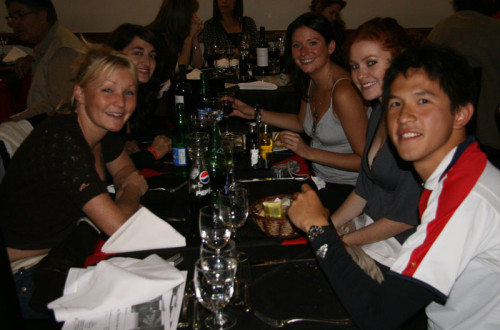
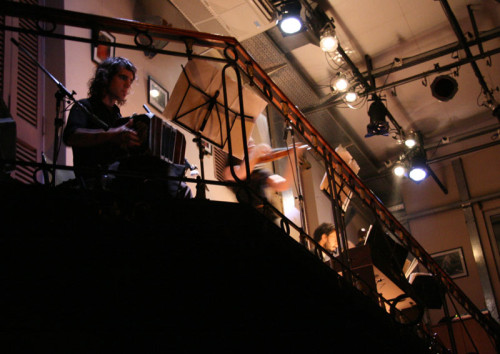
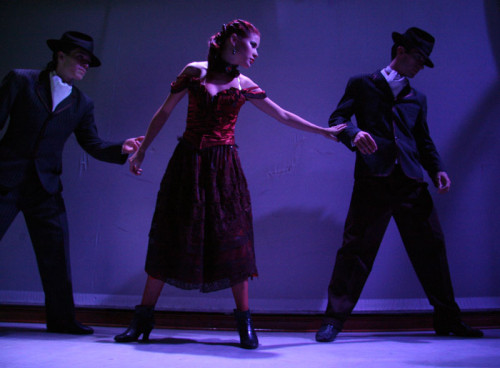
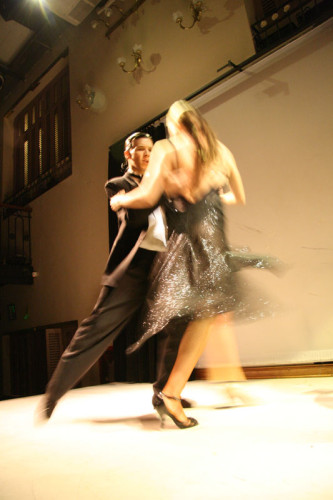
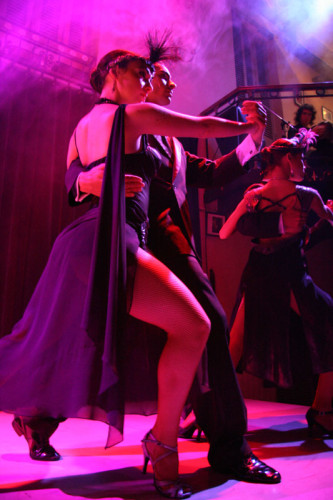
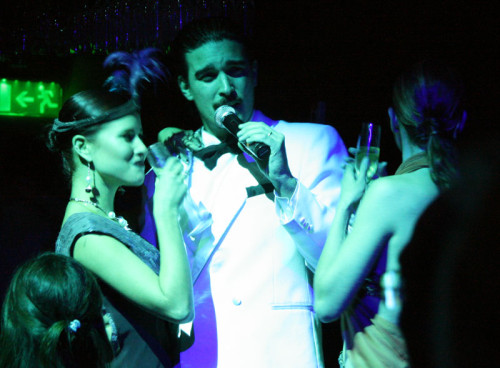
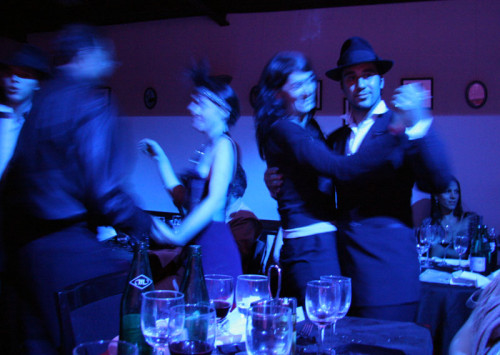
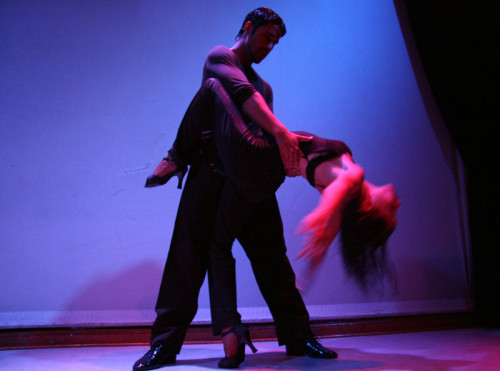
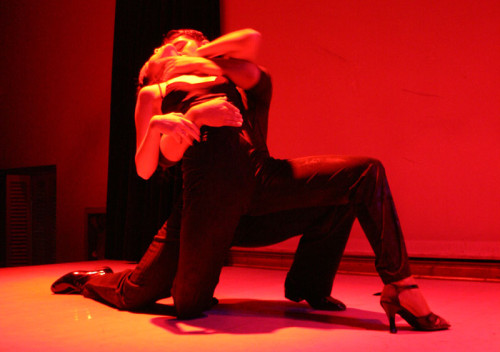
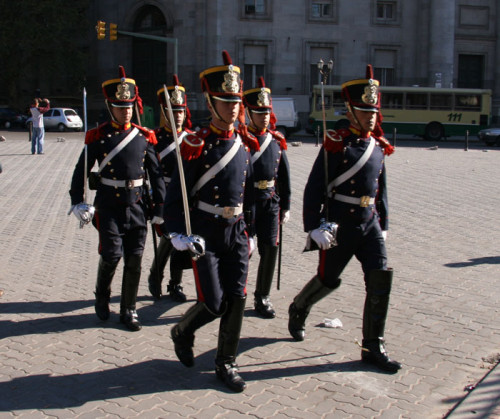
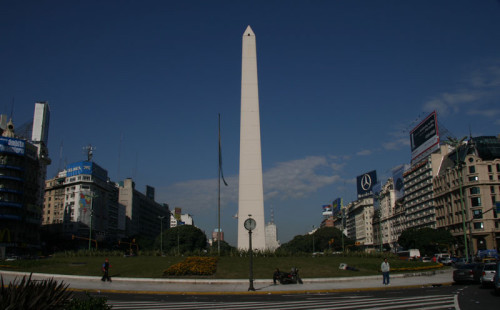
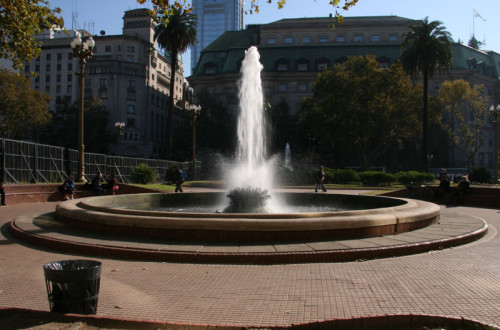
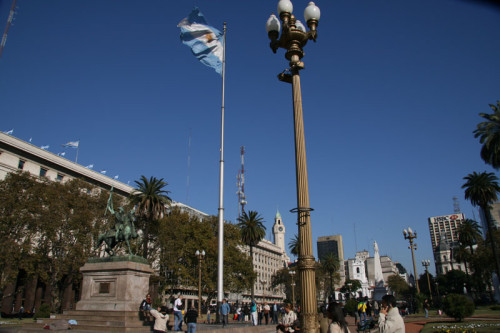
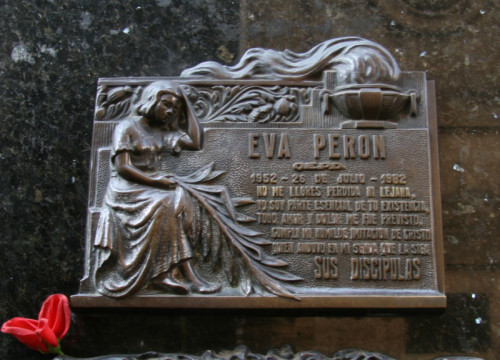
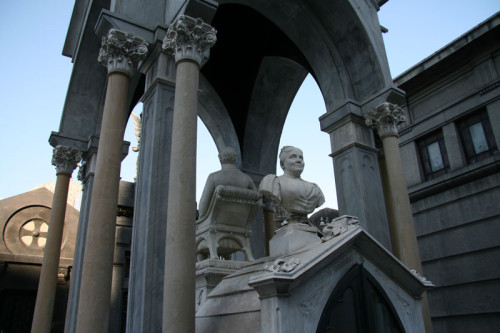
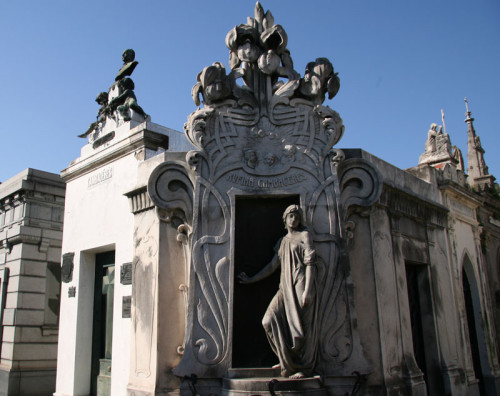
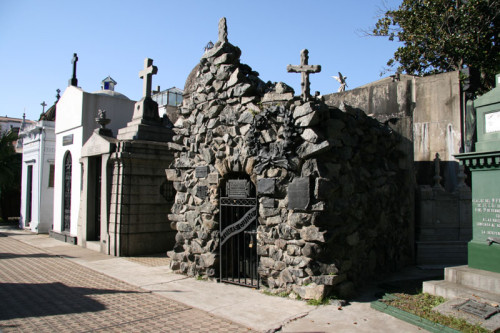
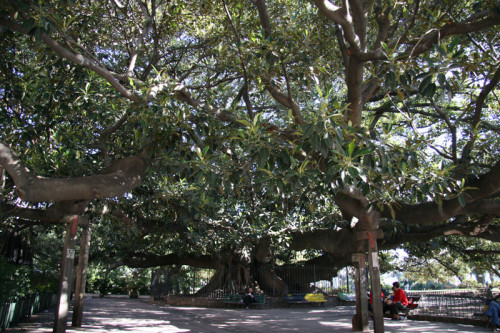
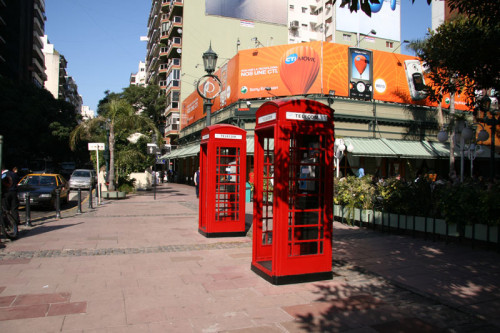
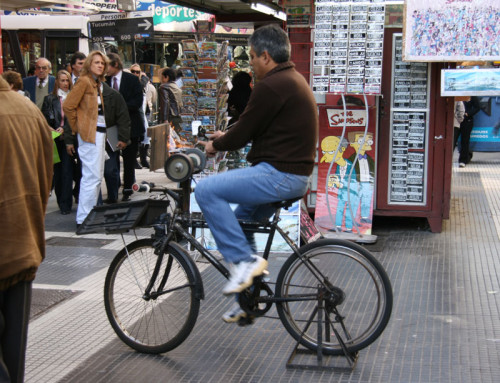
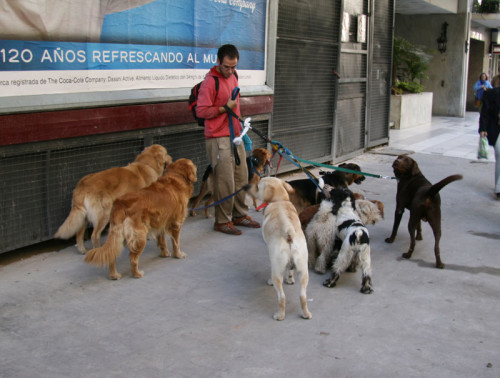
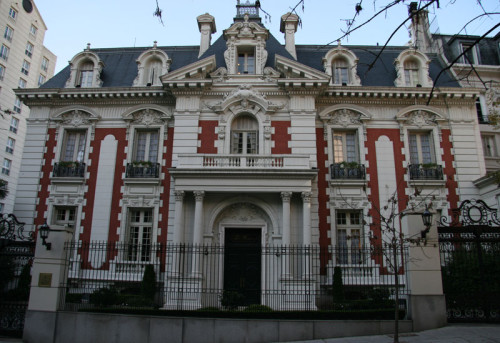
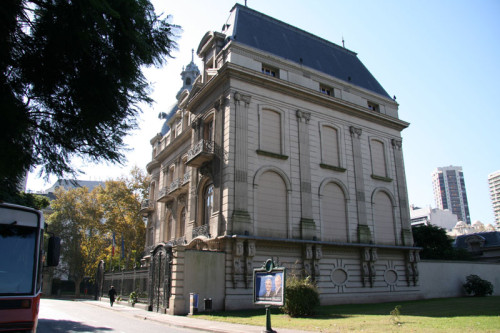
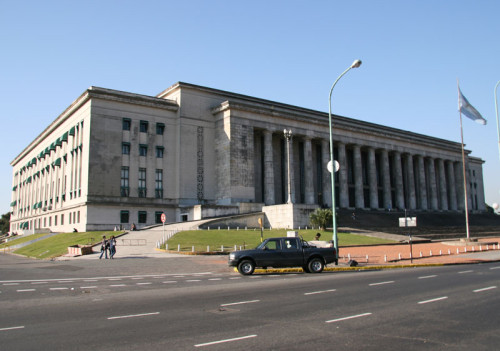
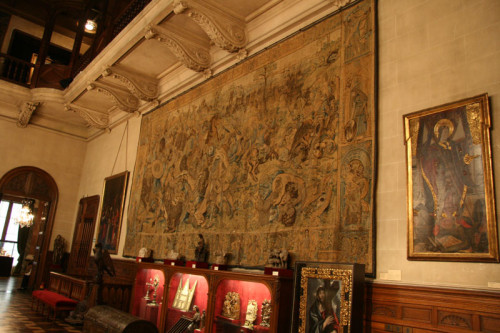
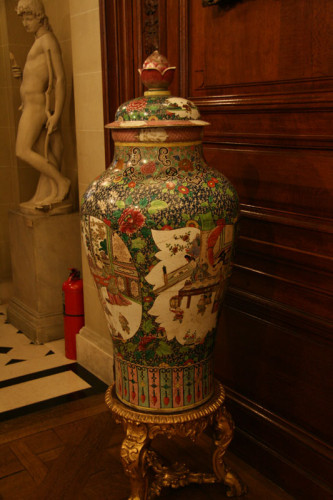
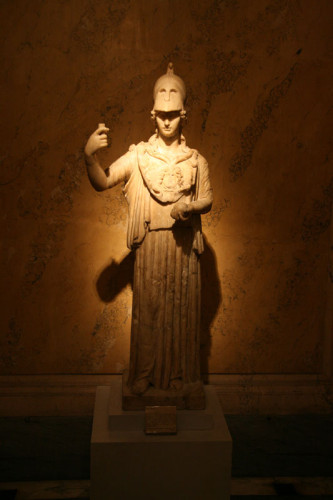
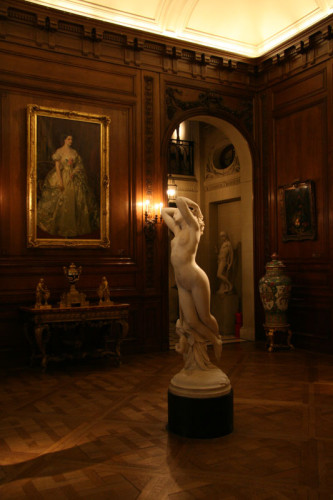
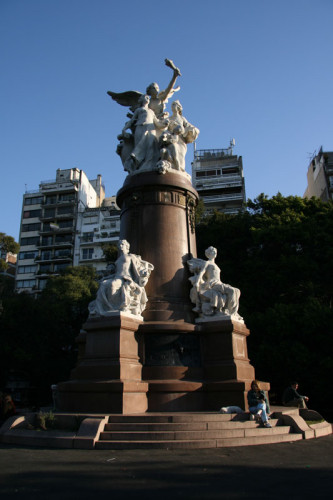
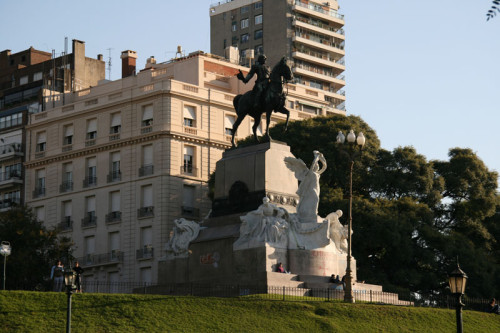
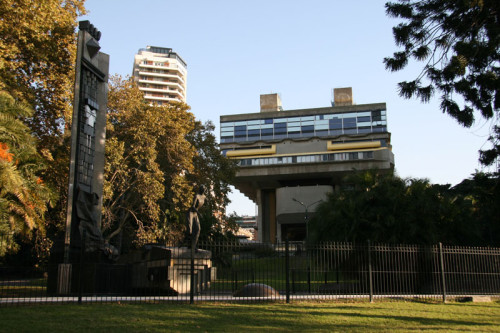
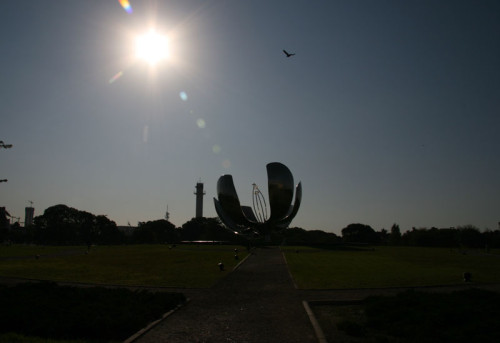
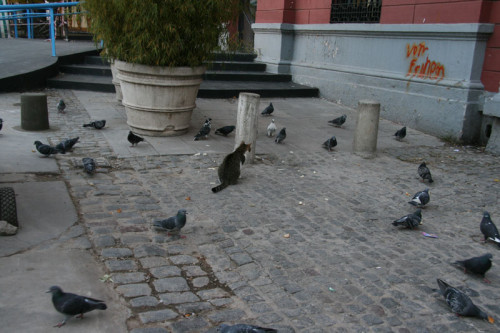
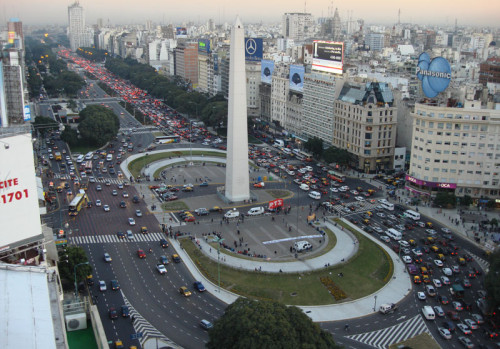
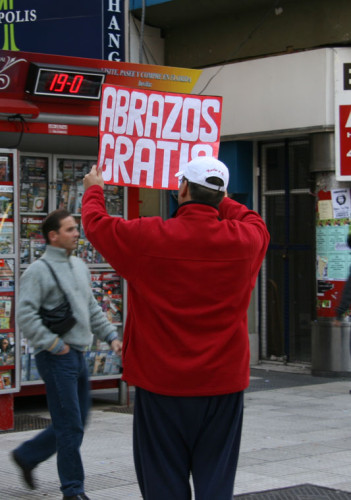
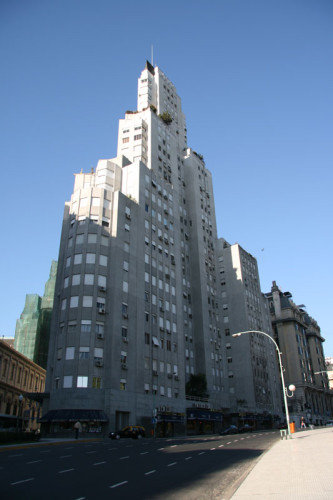
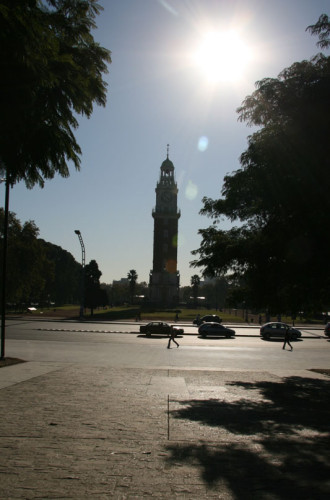
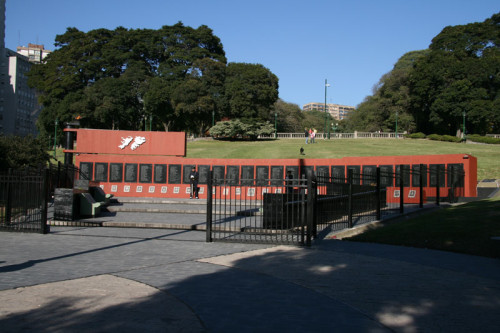
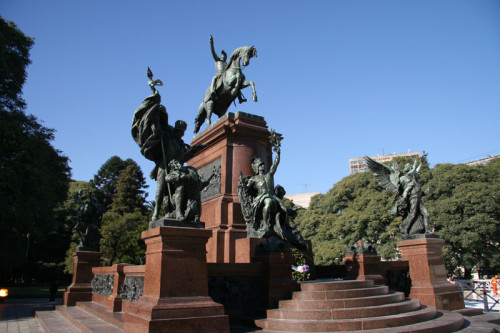
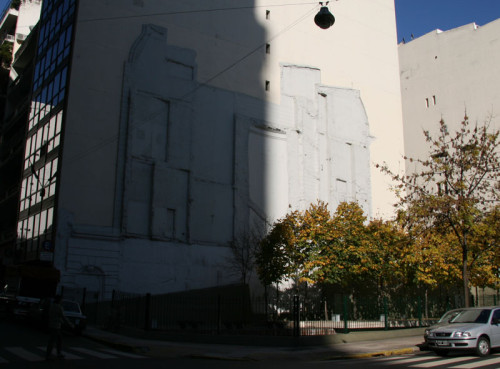
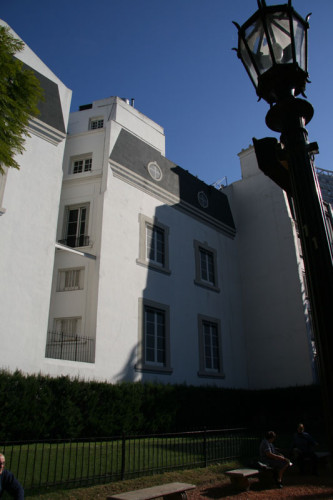
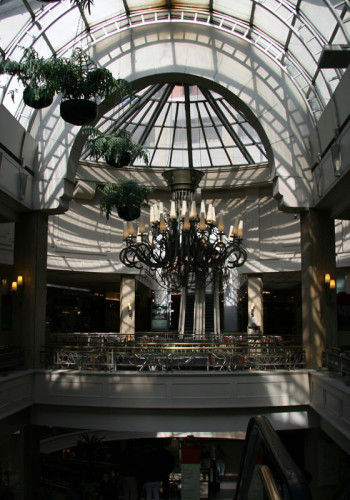
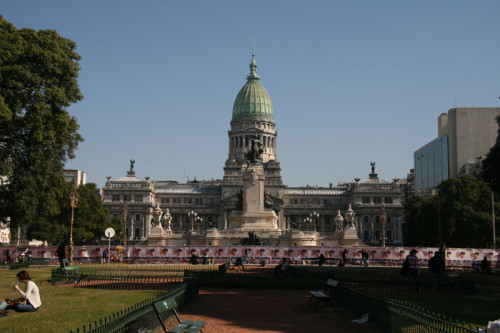
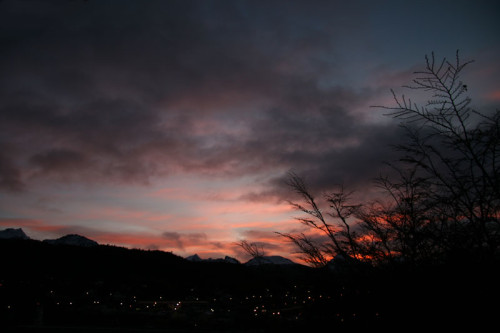
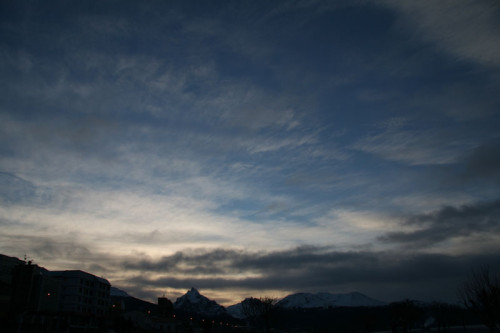
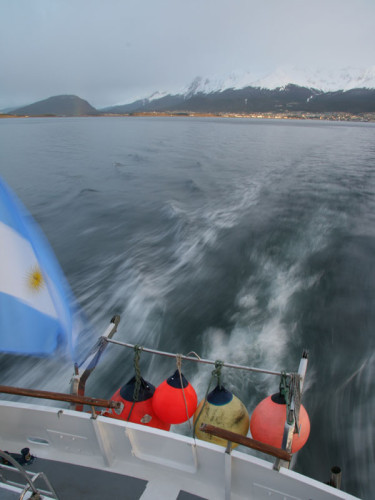
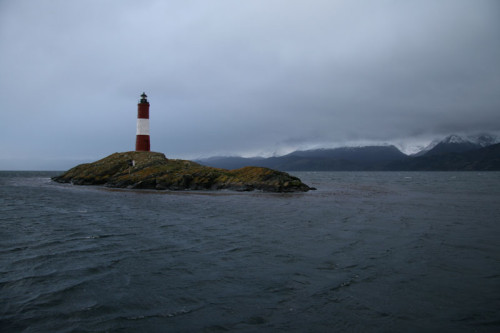
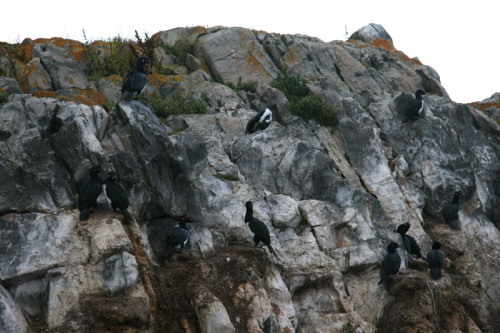
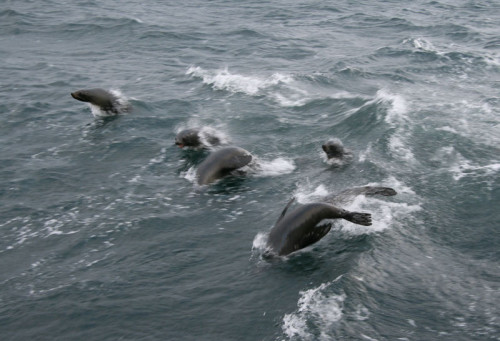
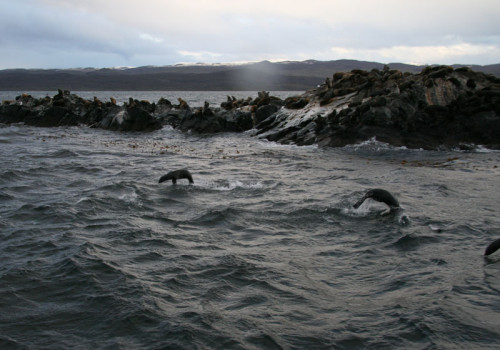
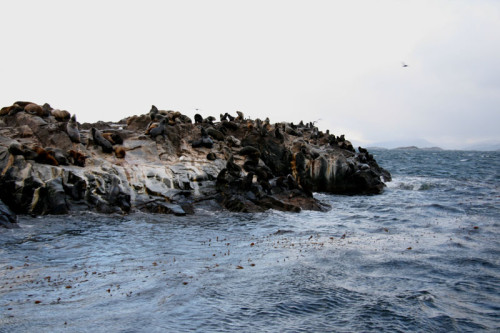
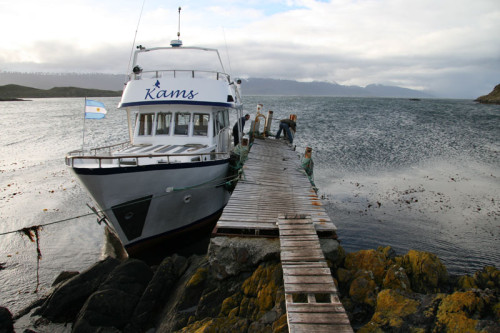
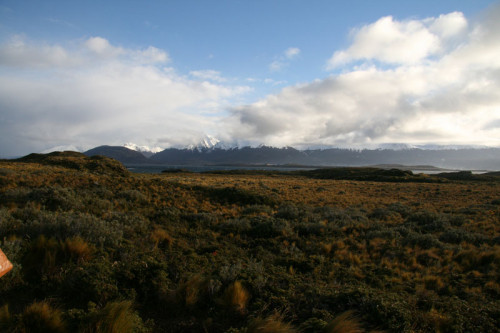
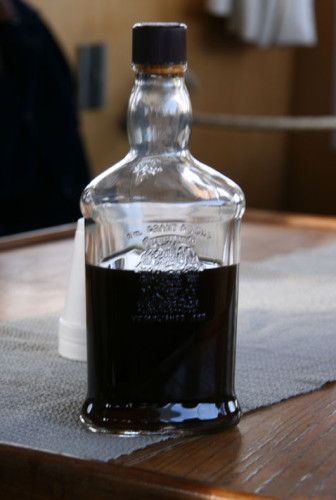
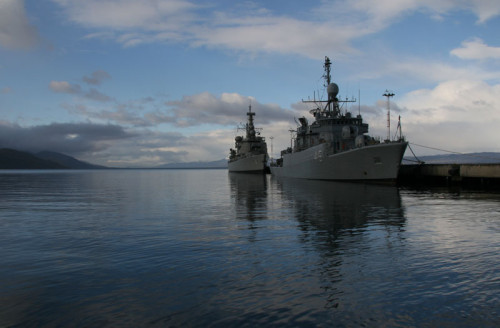
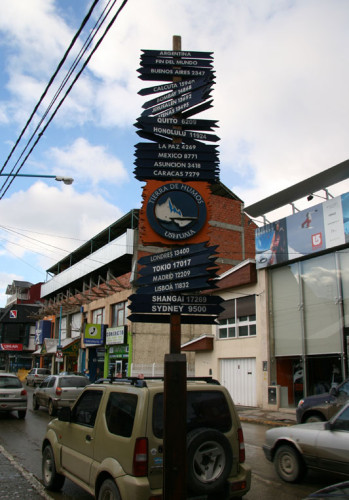
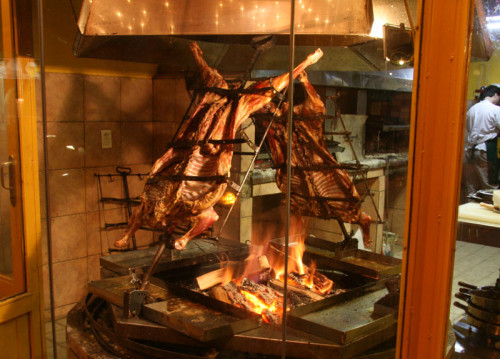
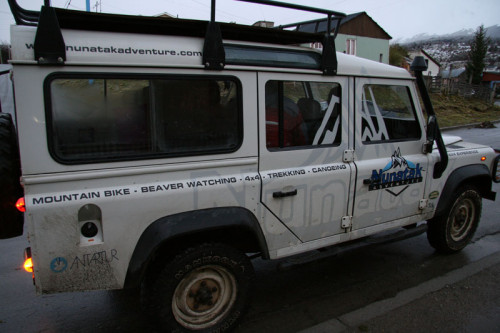
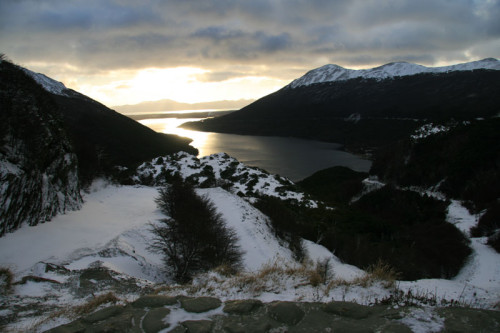
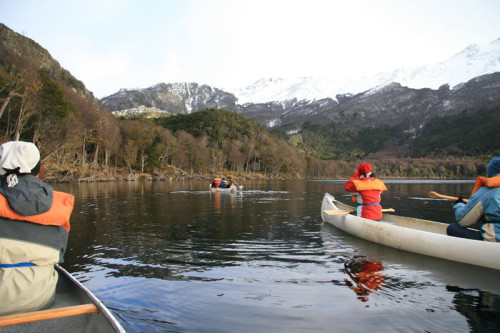
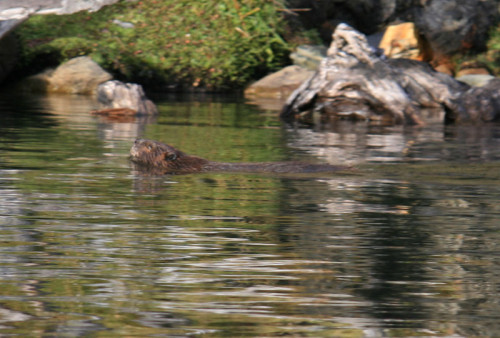
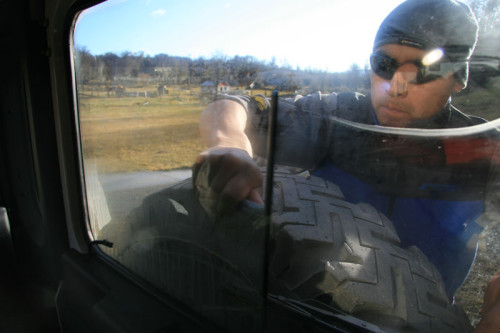
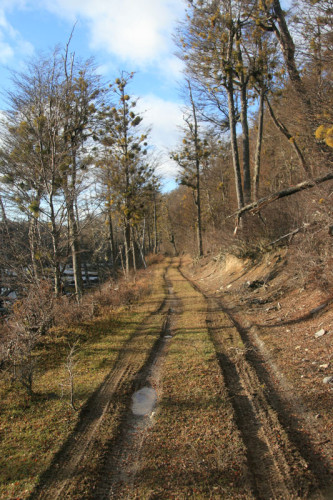
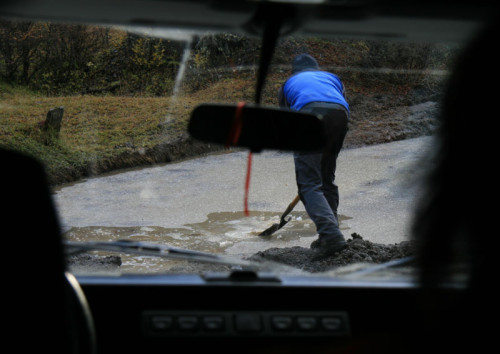
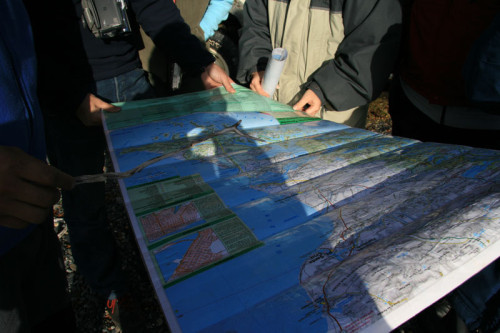
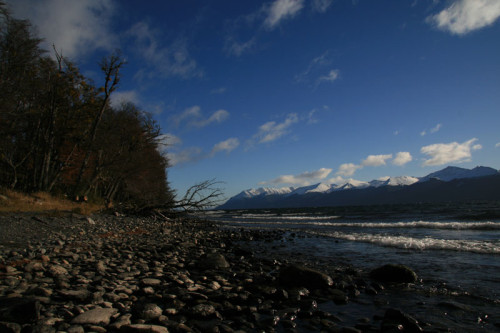
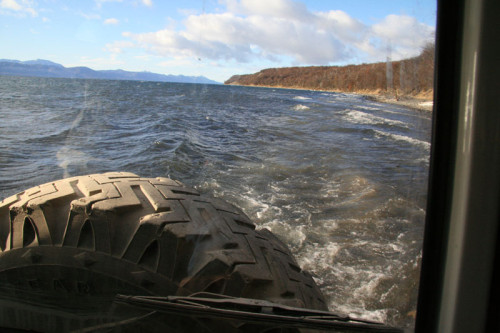
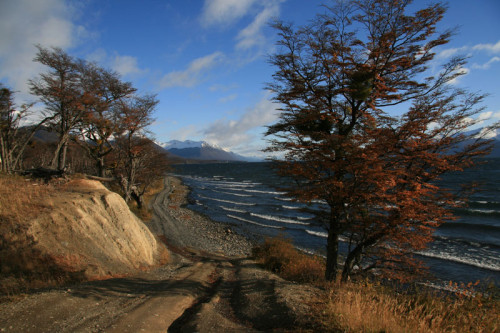
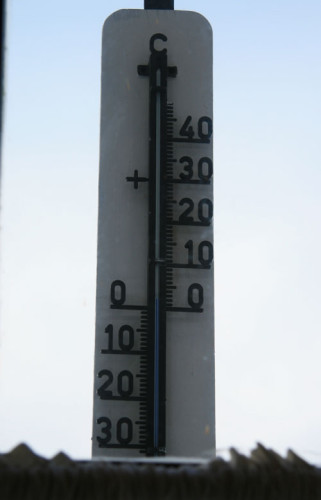
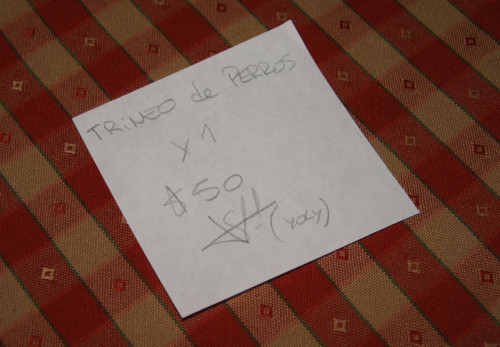
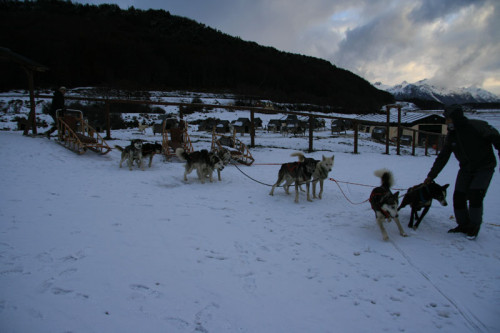
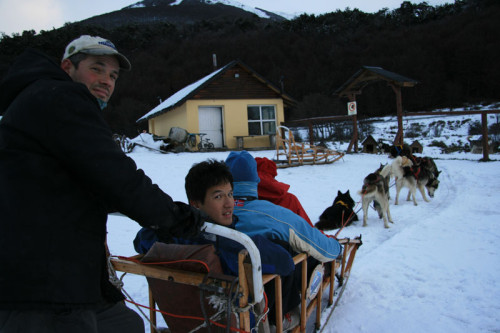
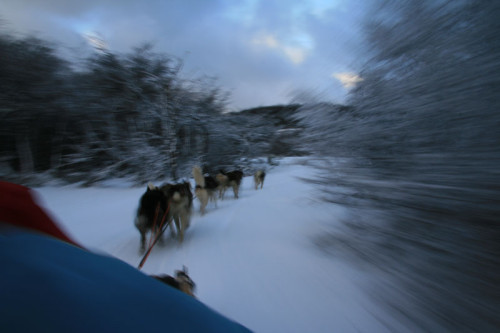
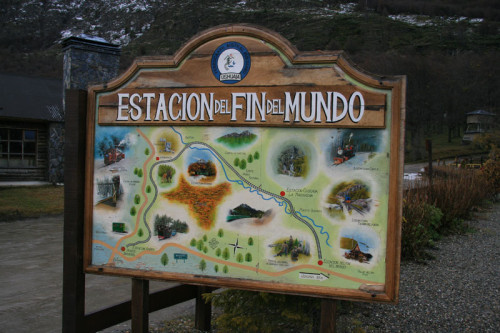
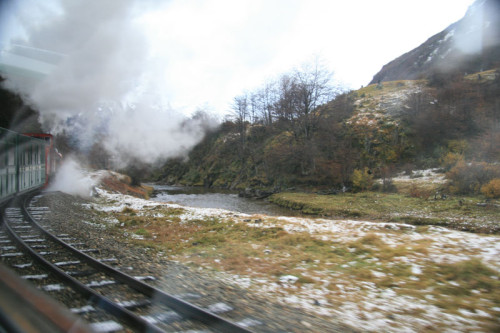
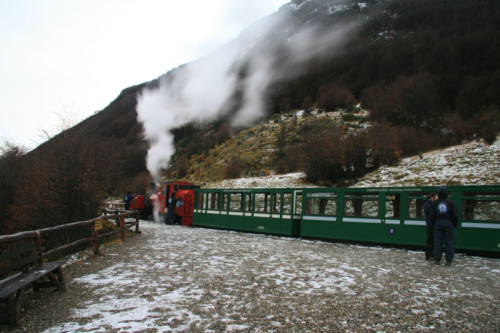
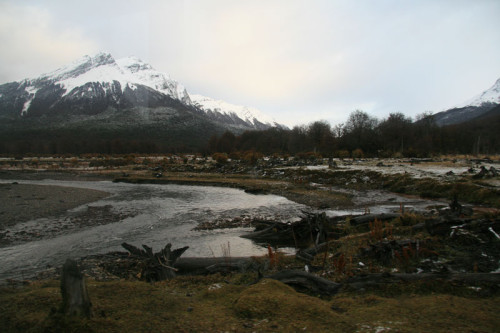
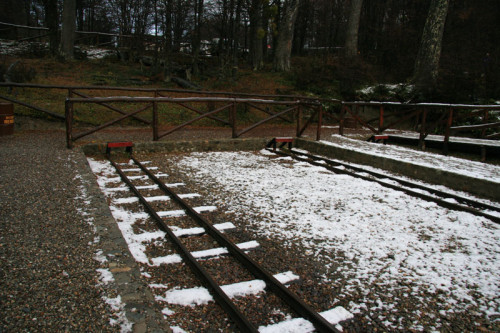
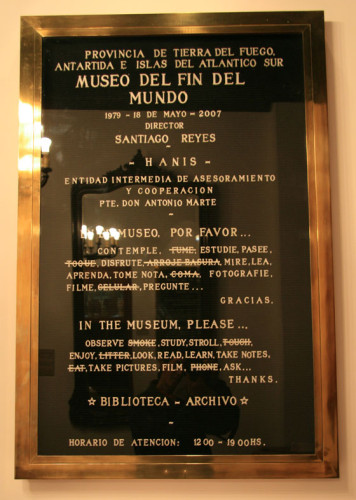
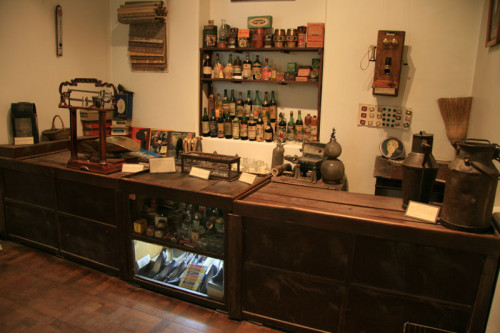
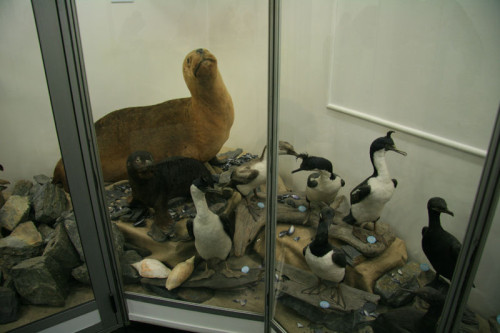
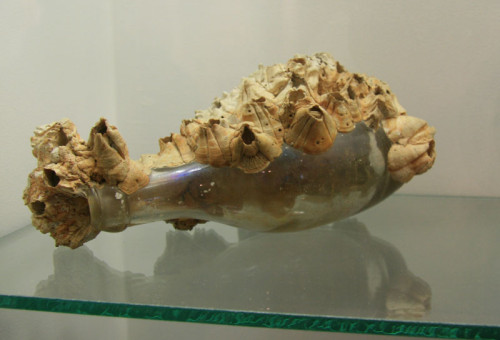
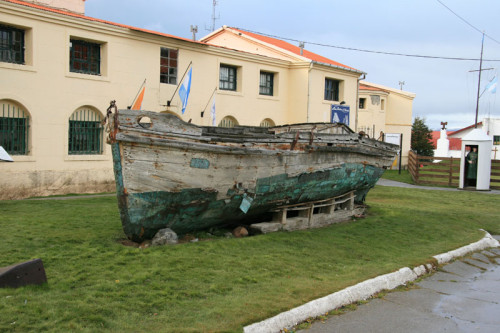
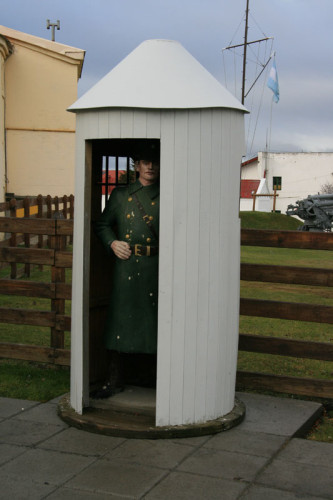
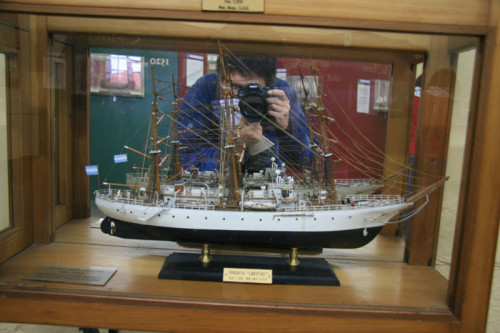
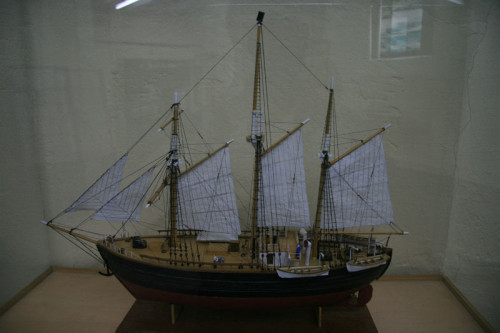
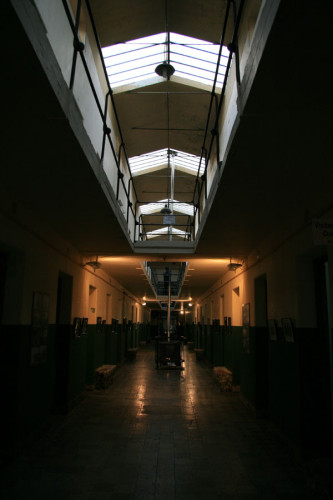
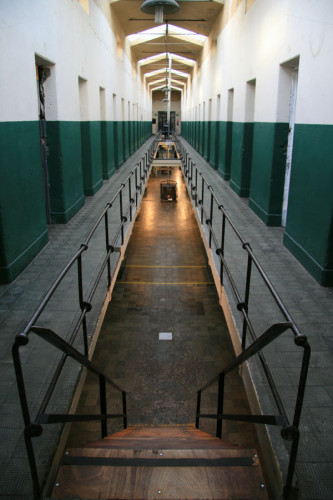
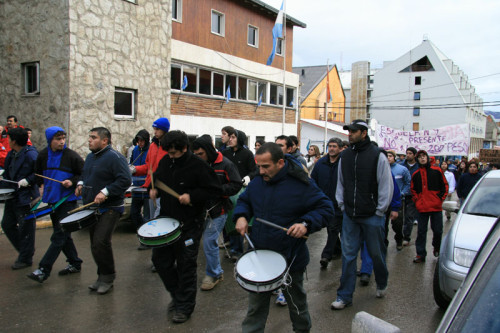
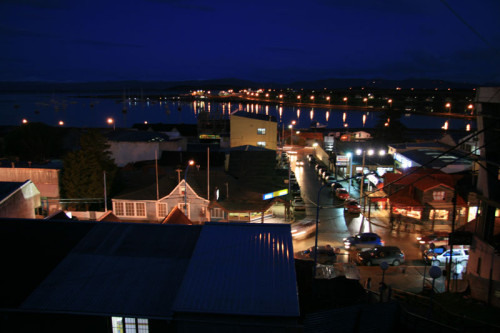
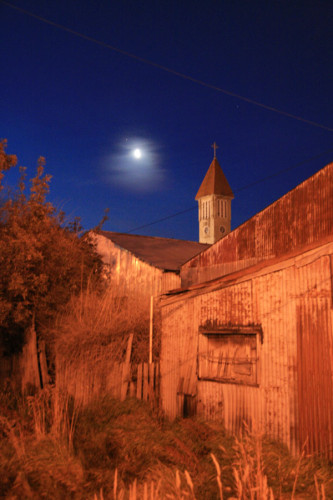
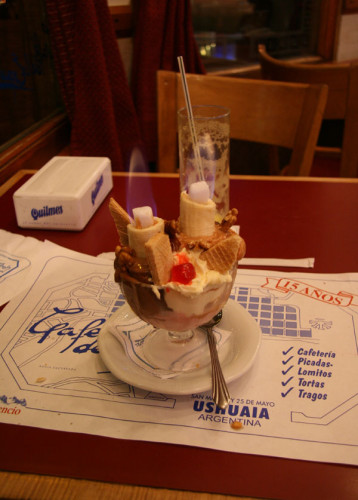
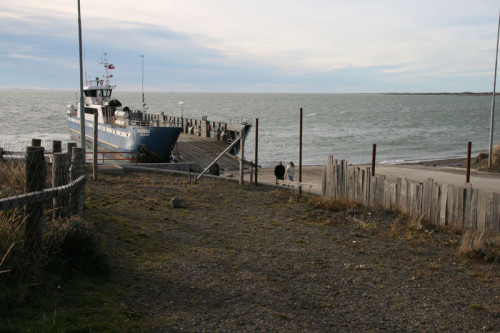
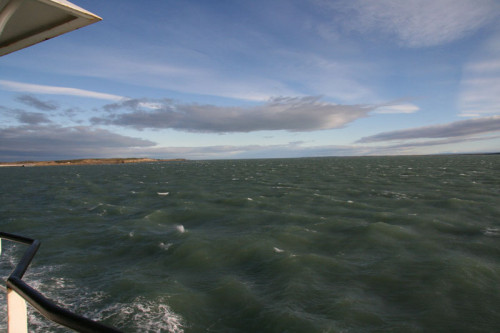
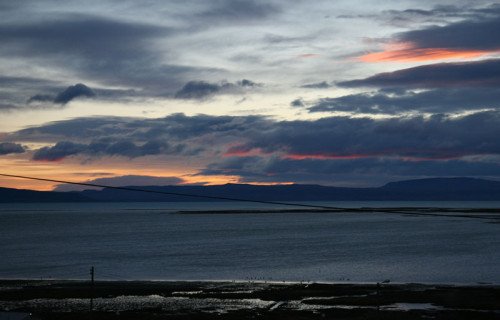
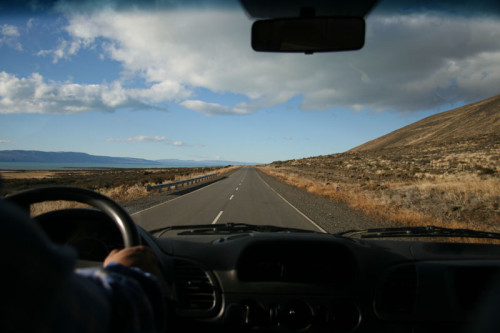
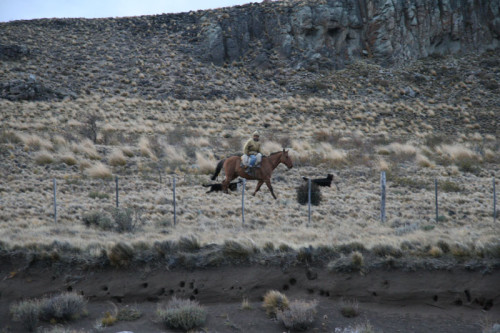
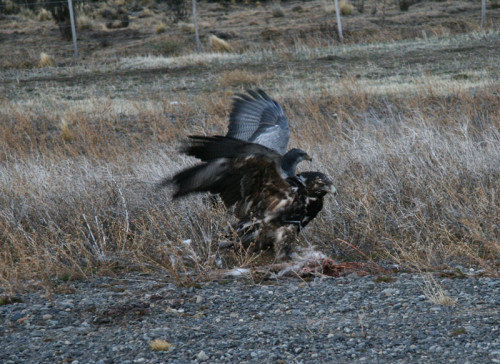
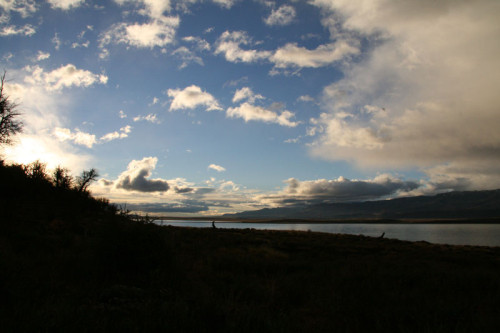
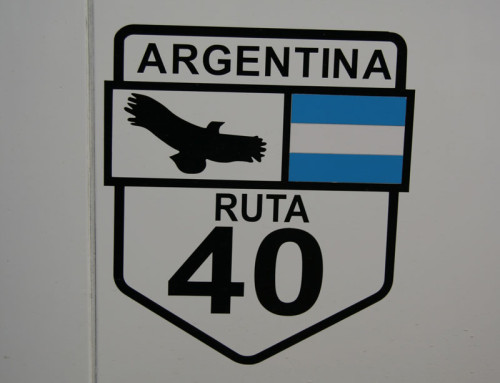
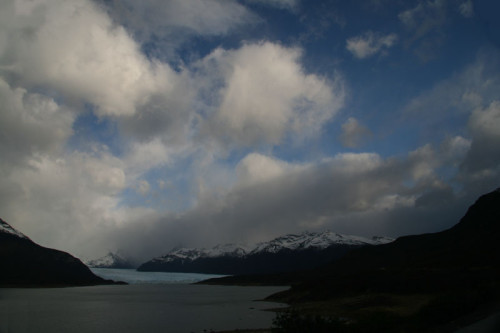
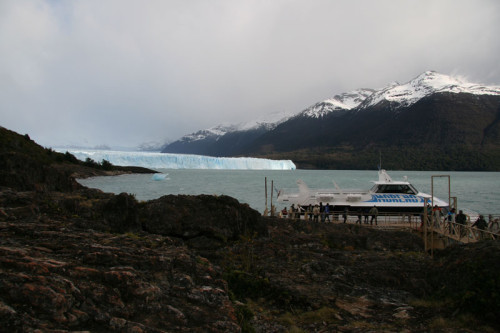
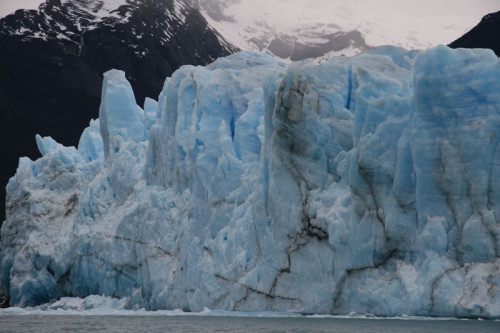

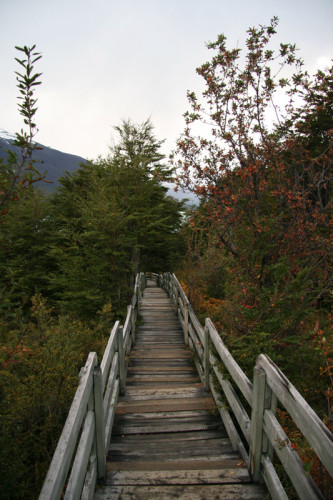
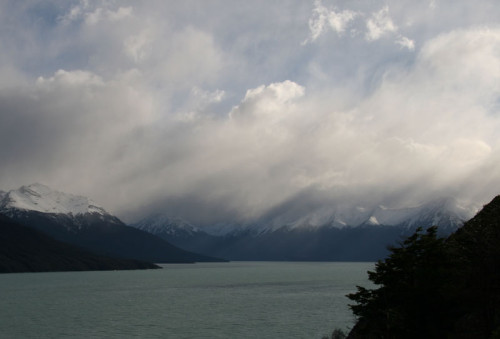
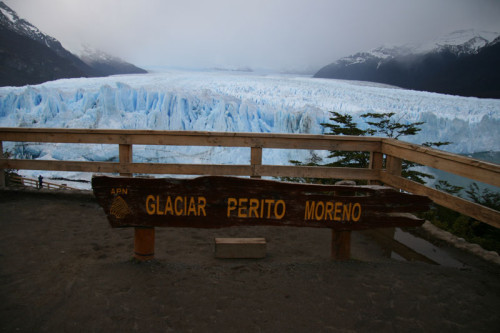

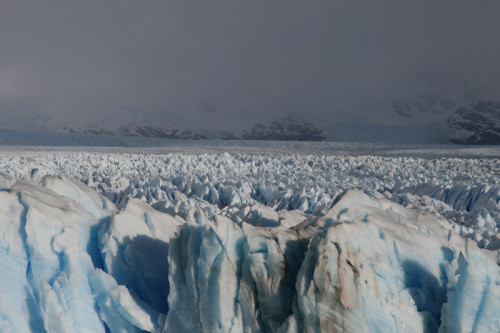
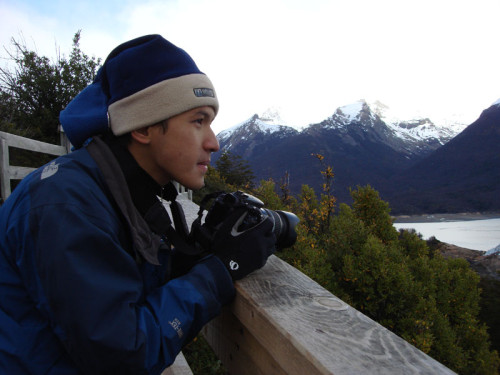

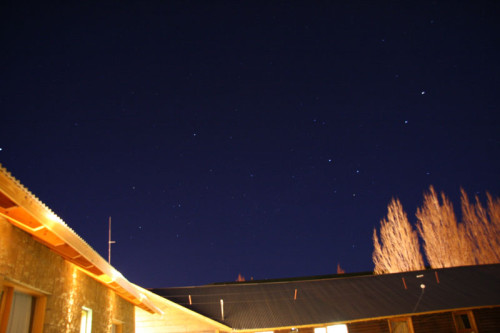
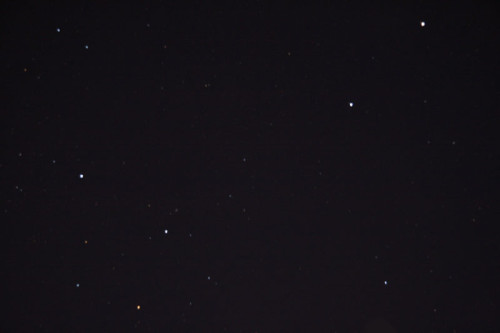
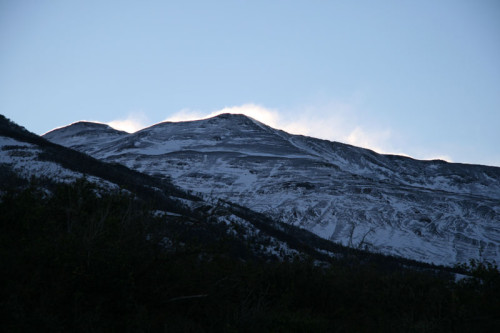
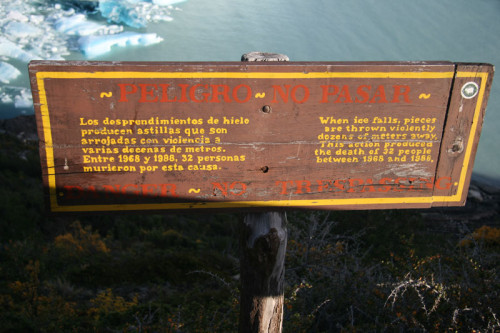

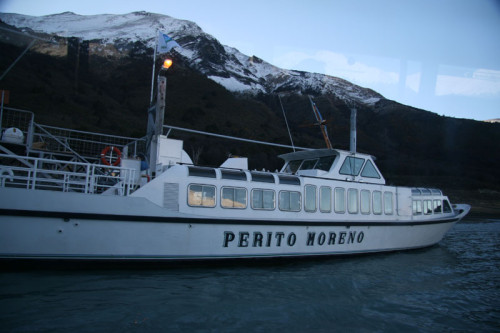
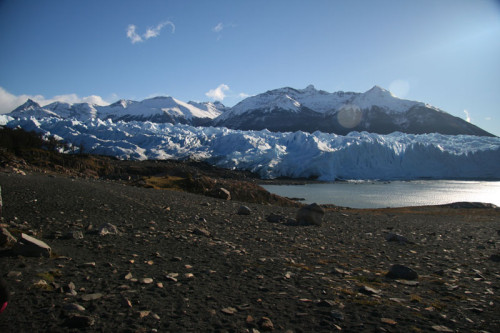
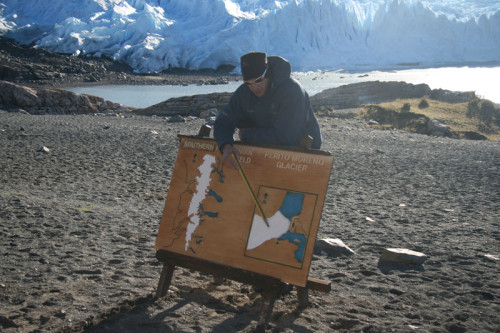
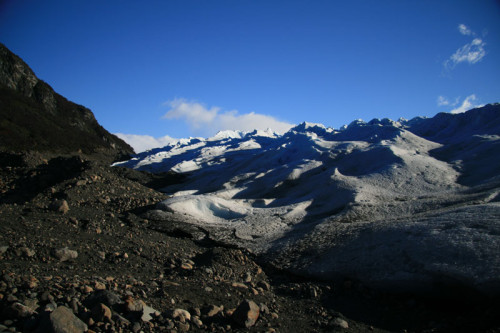
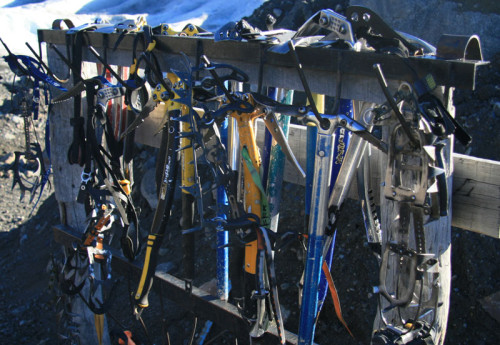
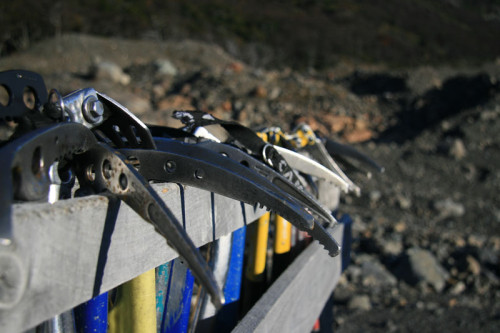
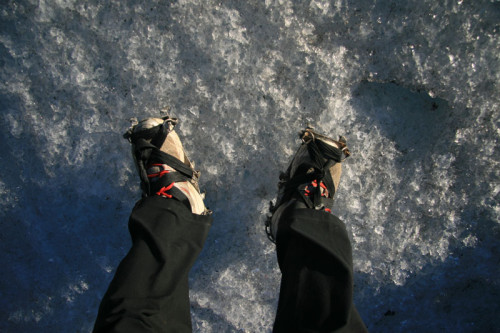
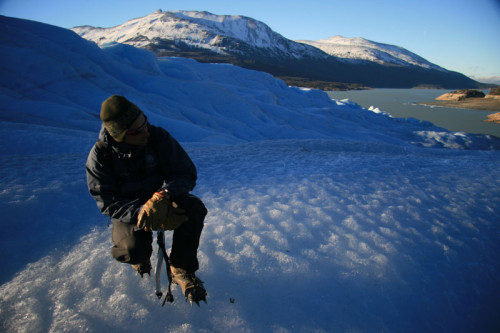
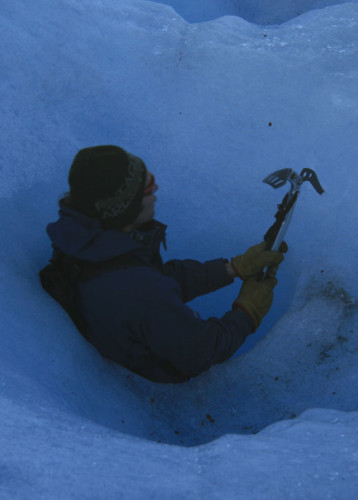
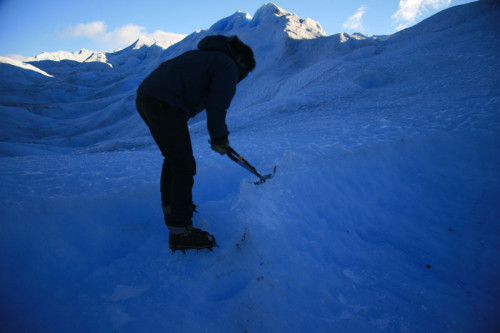
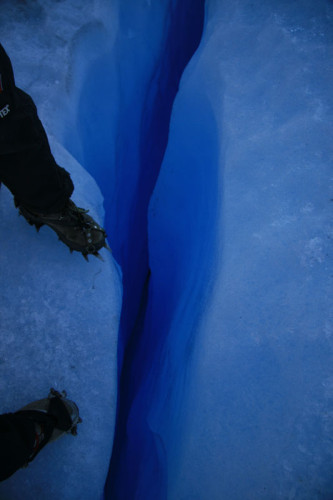
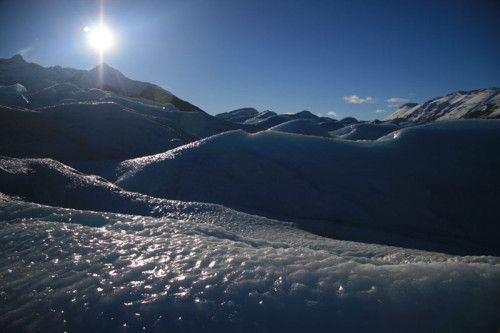
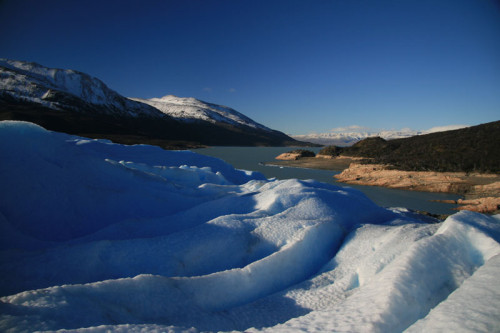
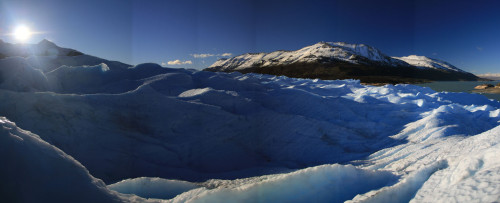
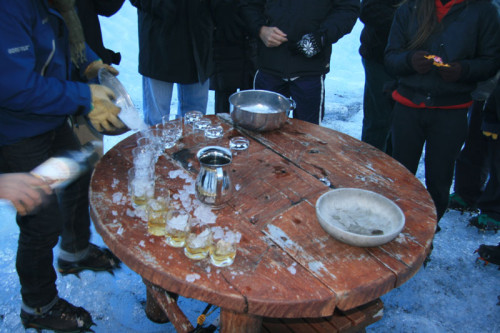
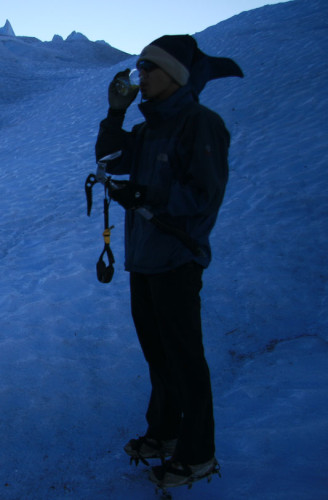
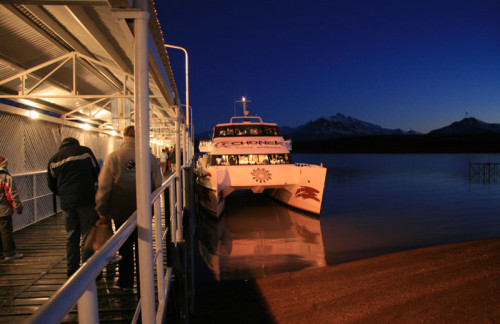
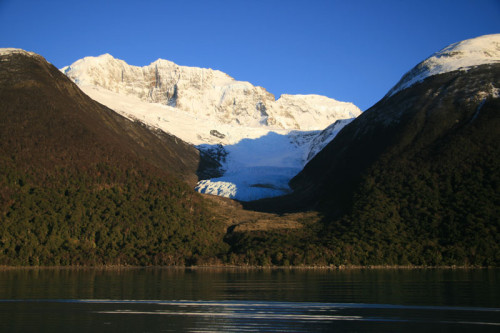
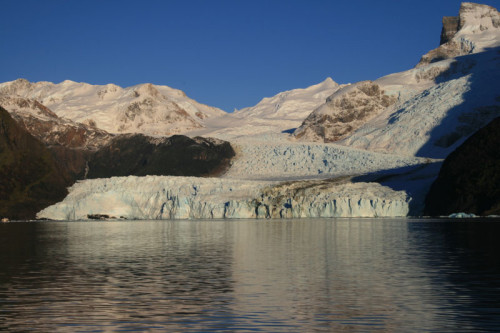
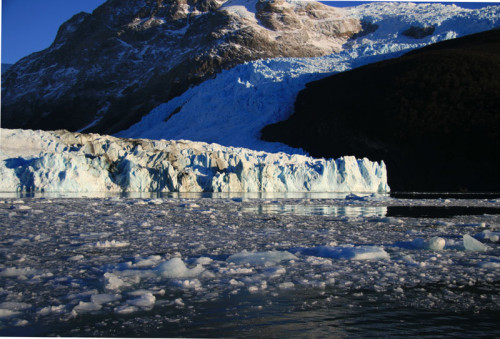
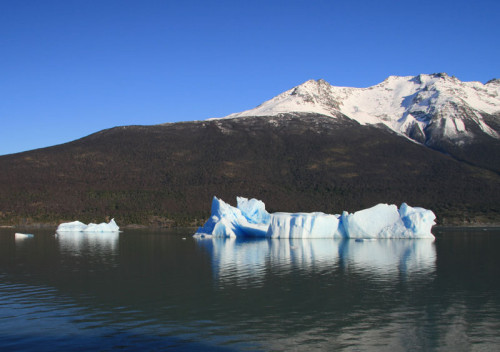
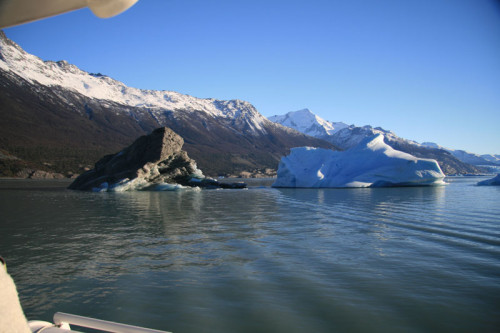
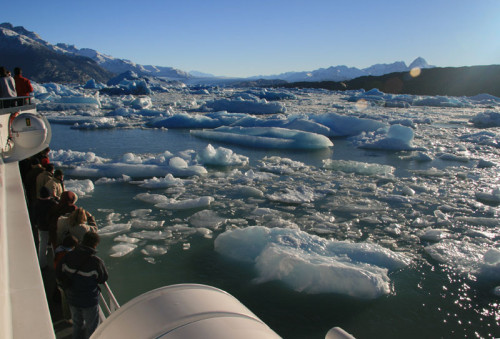
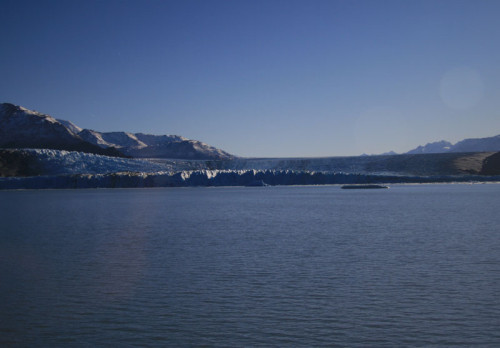
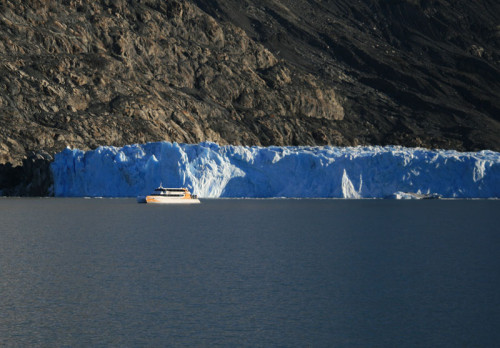
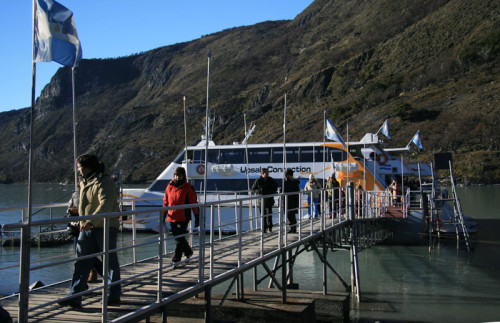
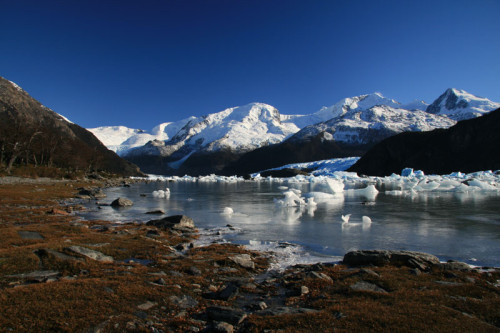
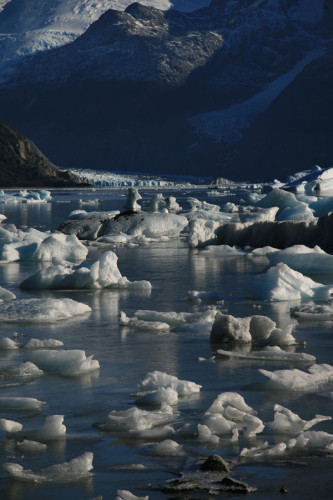
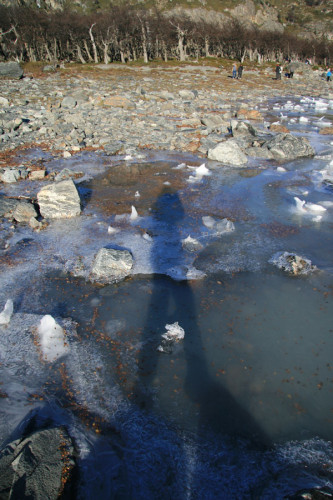
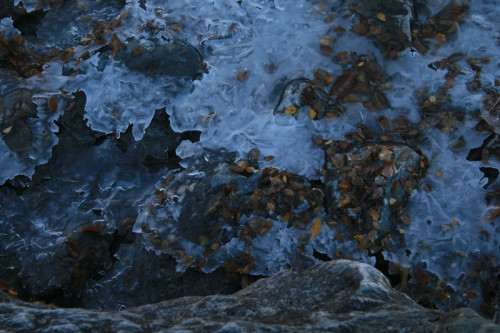
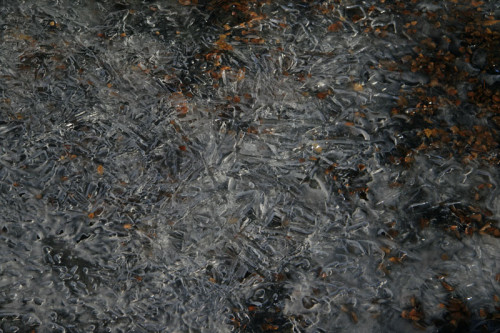
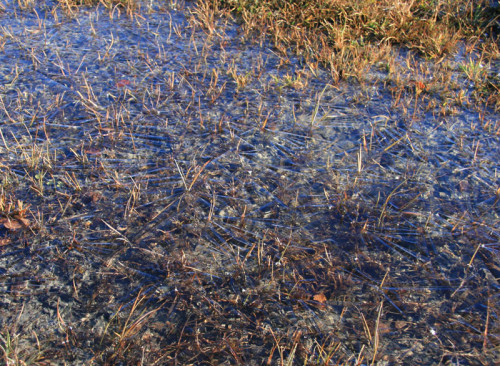
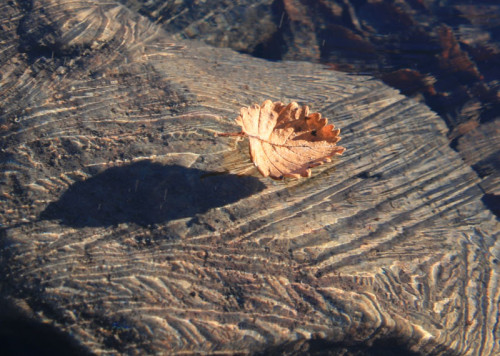
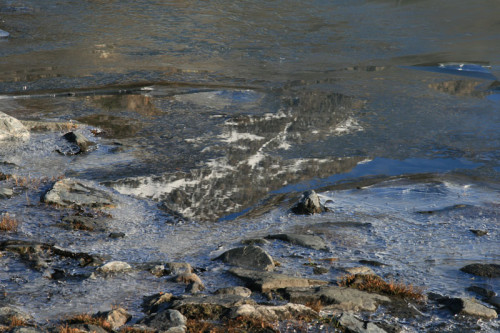
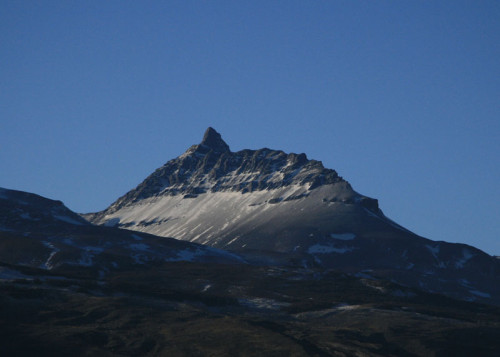
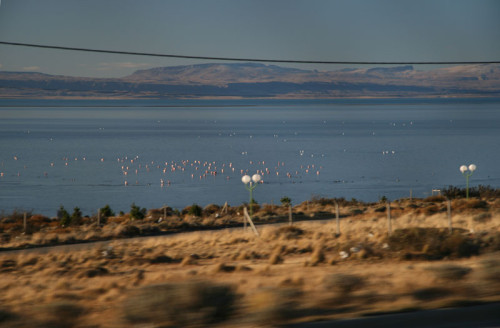
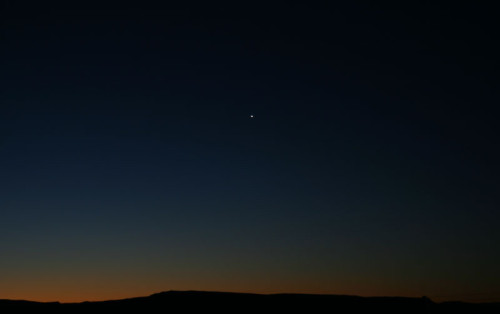
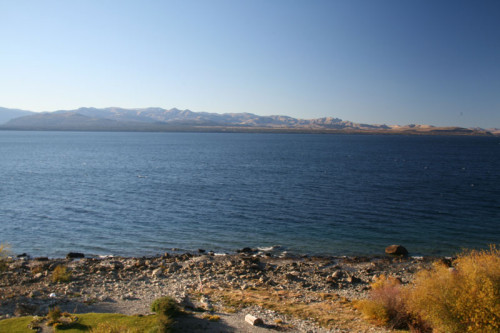
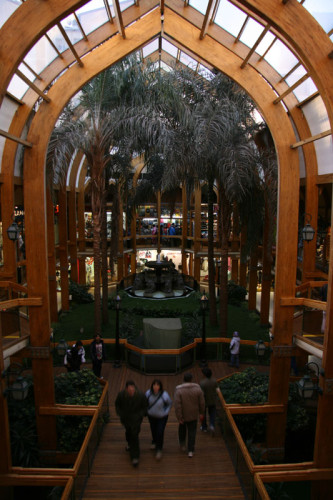
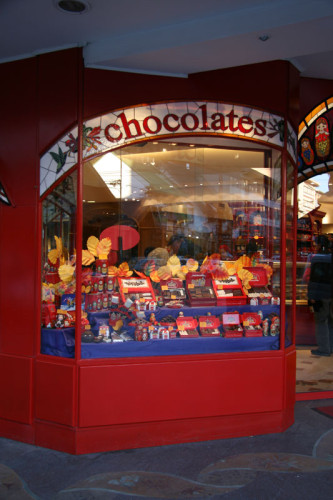
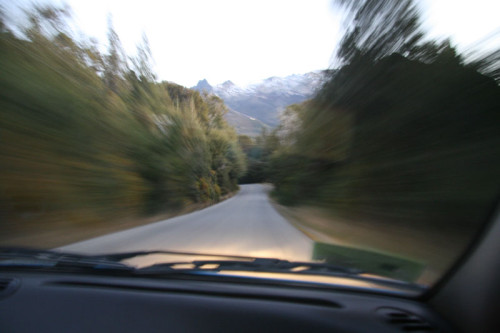
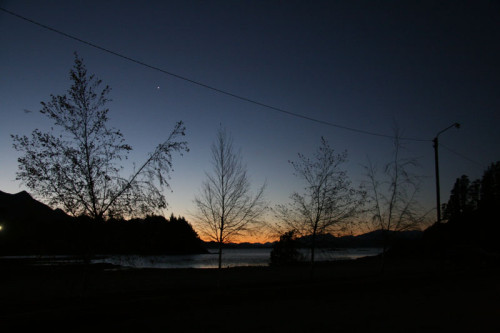
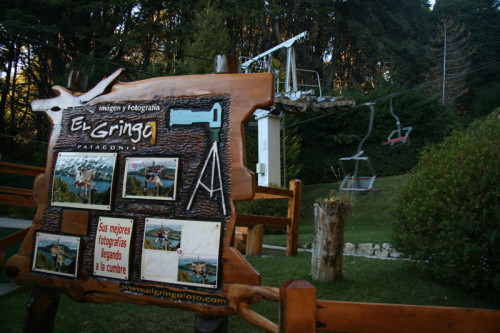
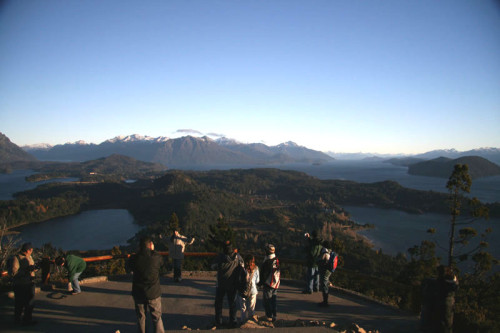

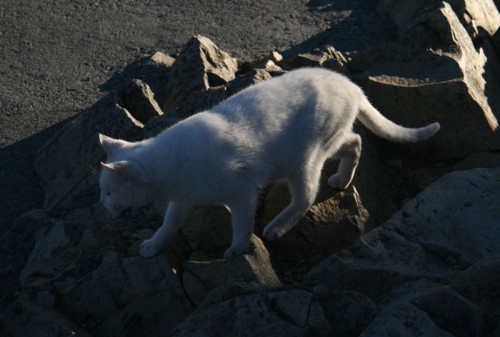
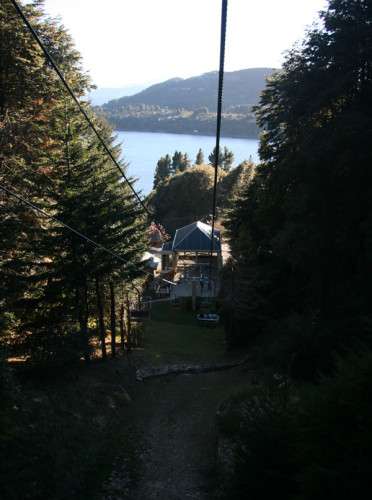
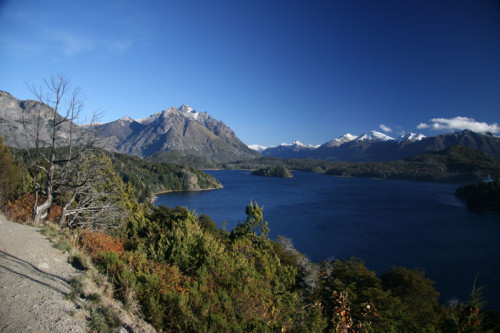
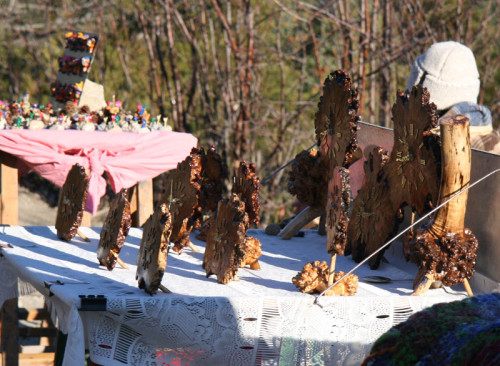
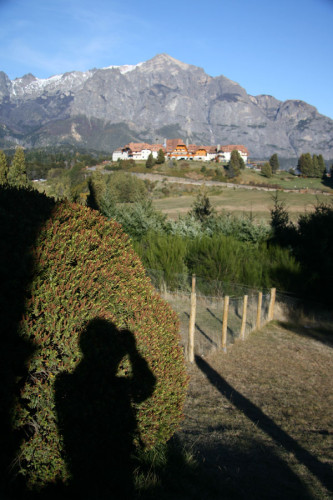
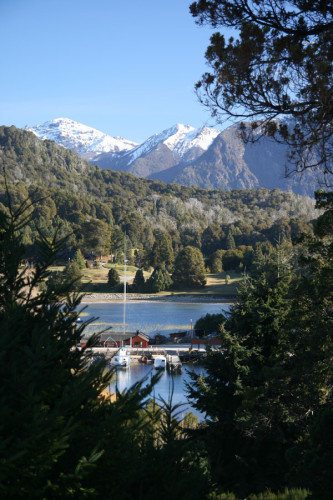
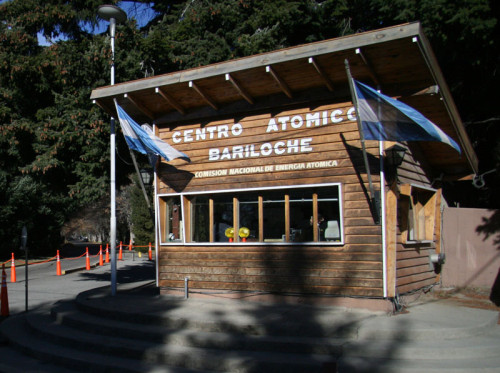
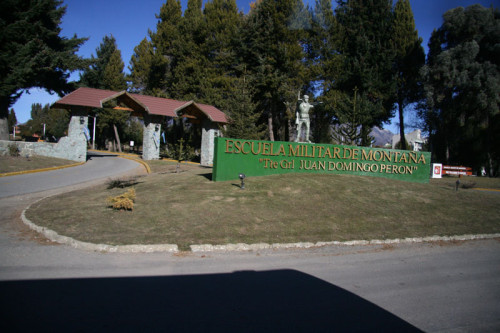
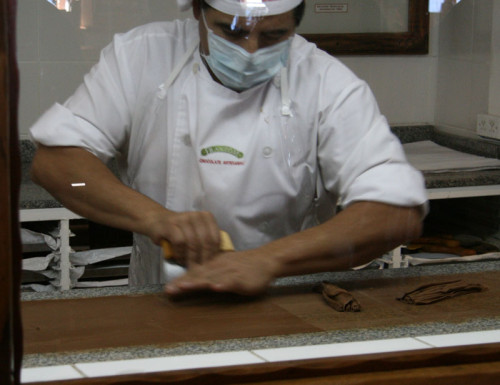
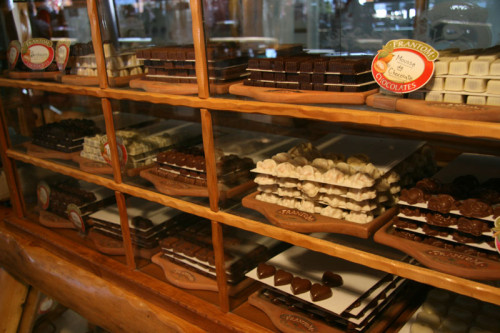
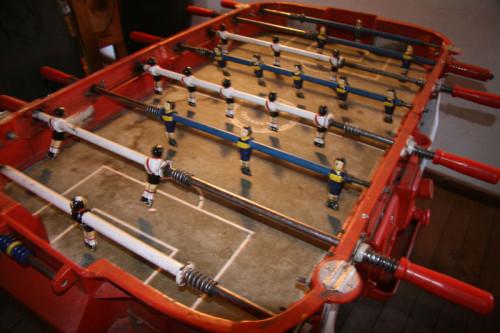
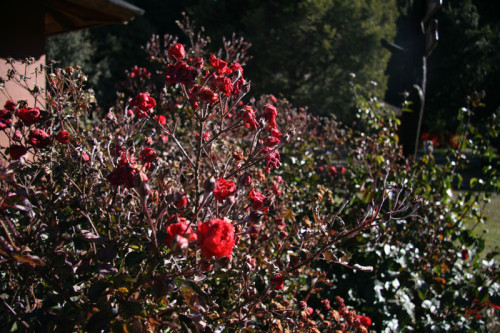
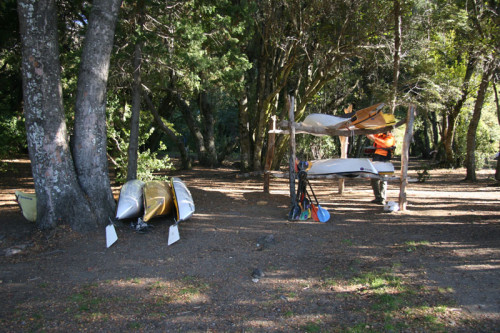
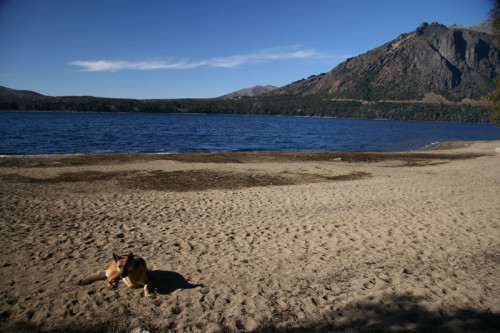
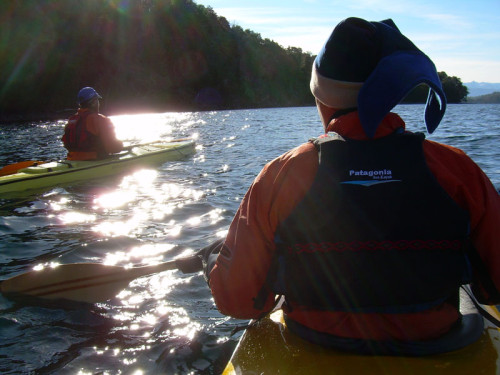
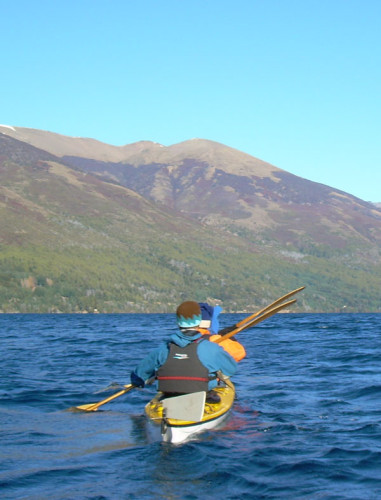
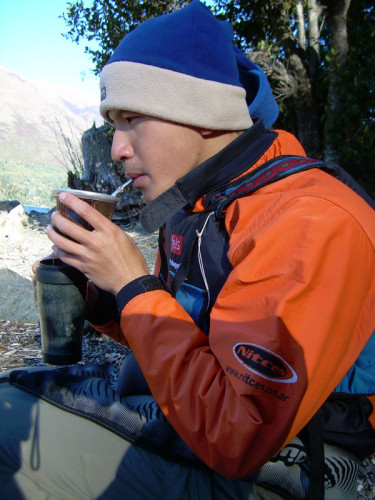
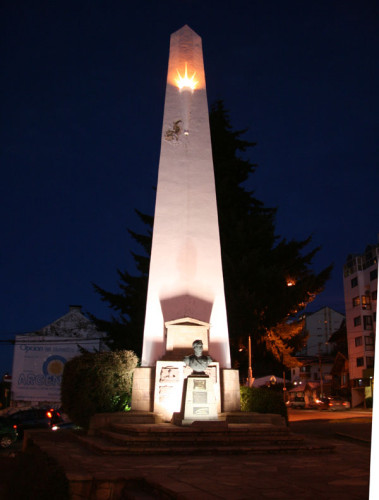
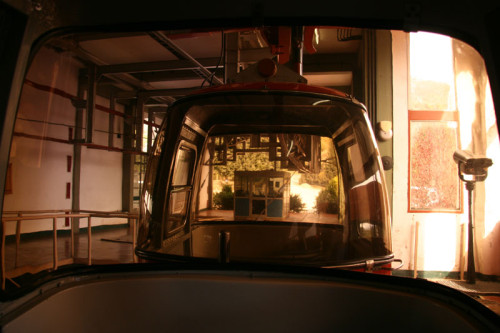
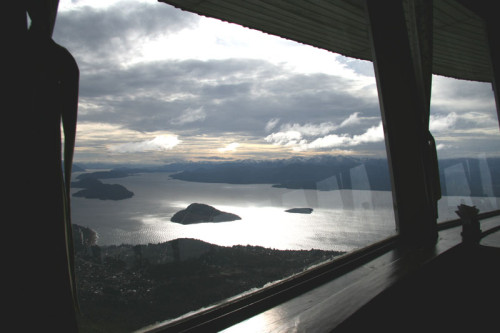
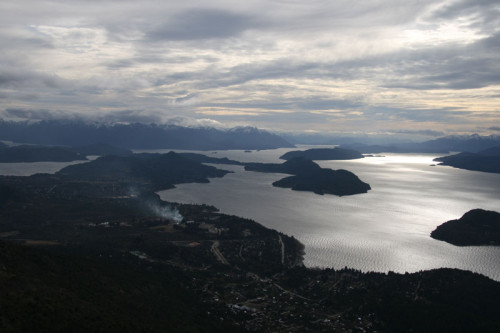
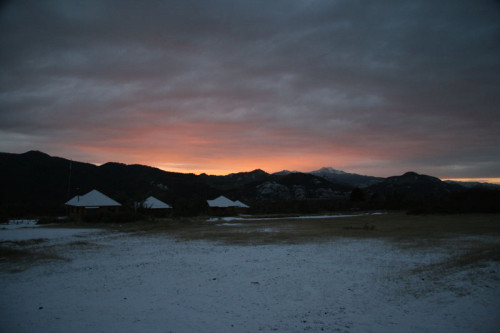
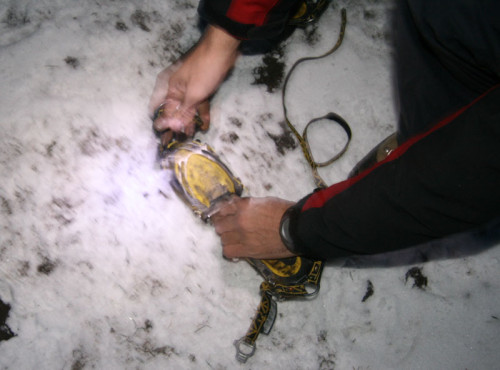
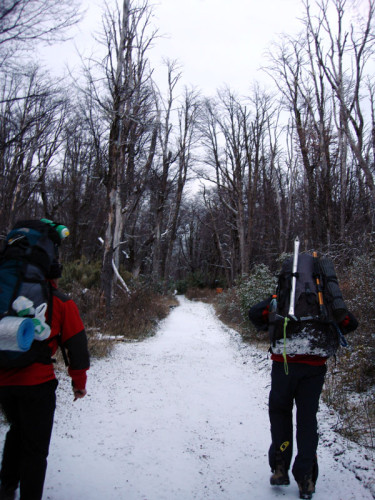
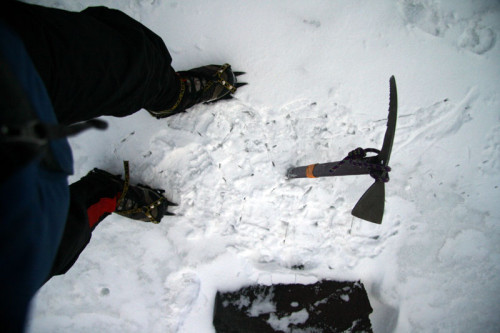
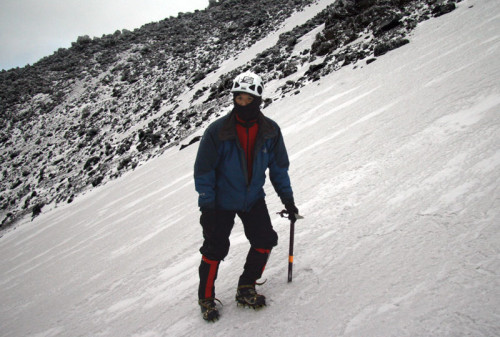
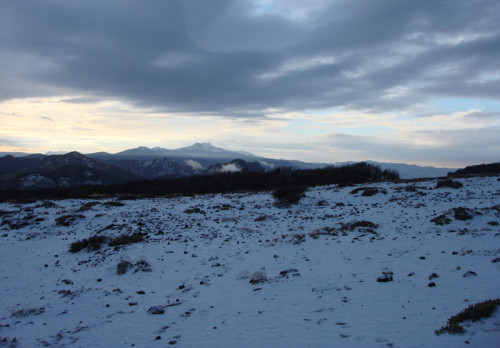
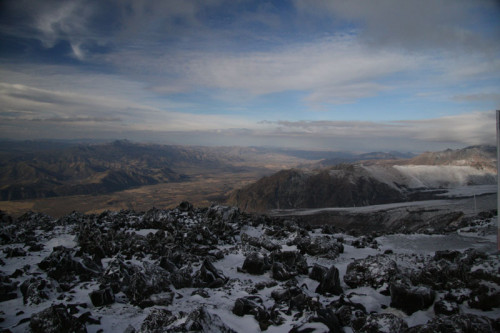
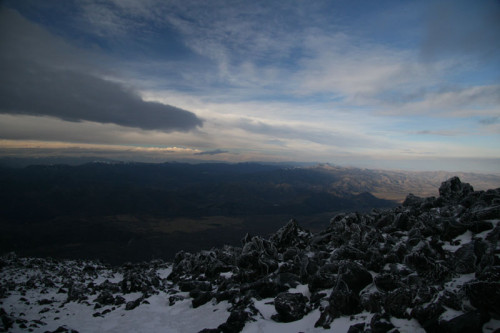
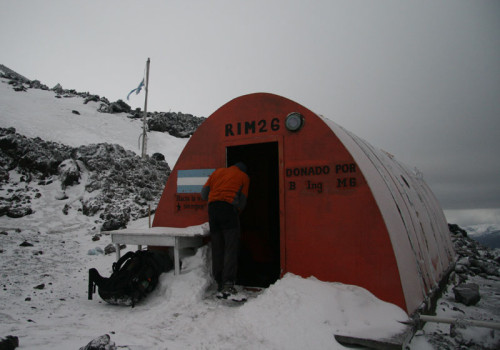
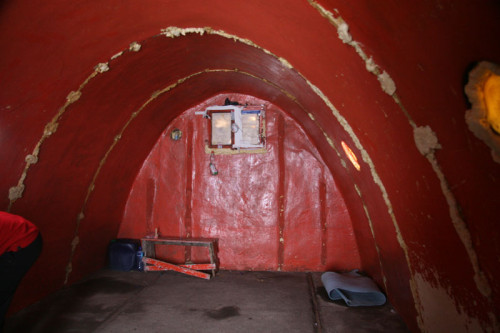
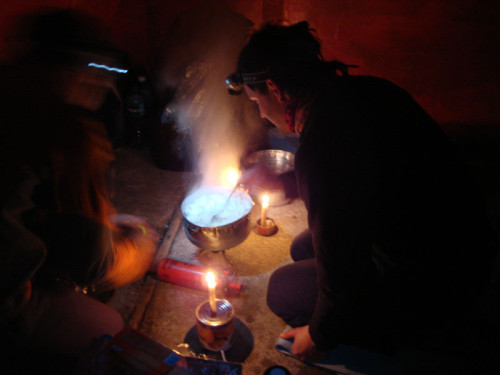
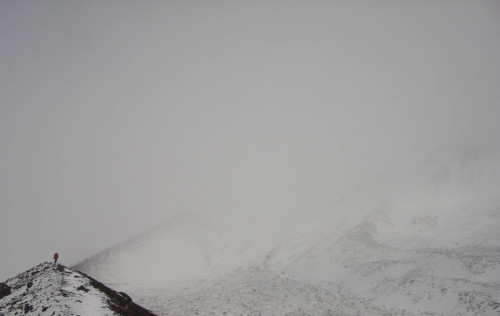
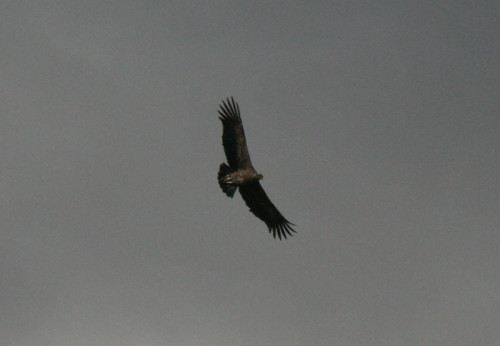
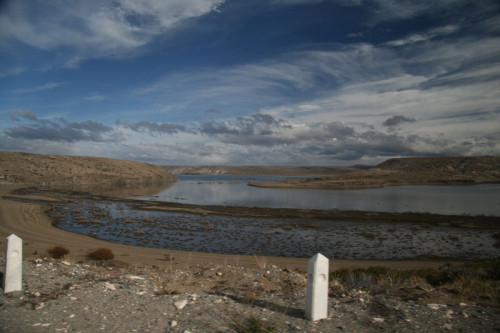
I loved your blog!!!
I learned more interesting facts about my own country from your stories than from the time I spent living there!
Now I am doing kinda the same as you did… but in the US!
I’m glad you enjoyed it!
I can proudly say we live in a beautiful piece of land 🙂
-“An Argentinean Wandering Around the US”
Can you tell me exactly what the most important snake is, my brother thinks it’s a boa constrictor.
that’s an interesting question…
I think it all depends on how you define “important”